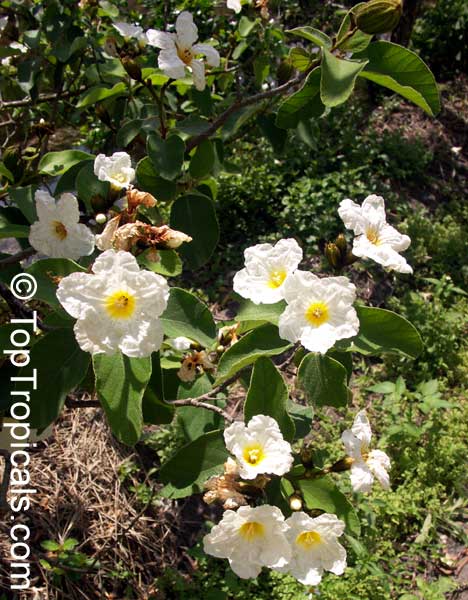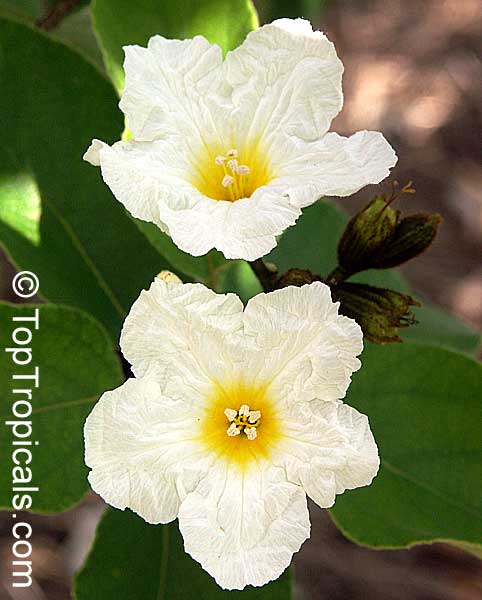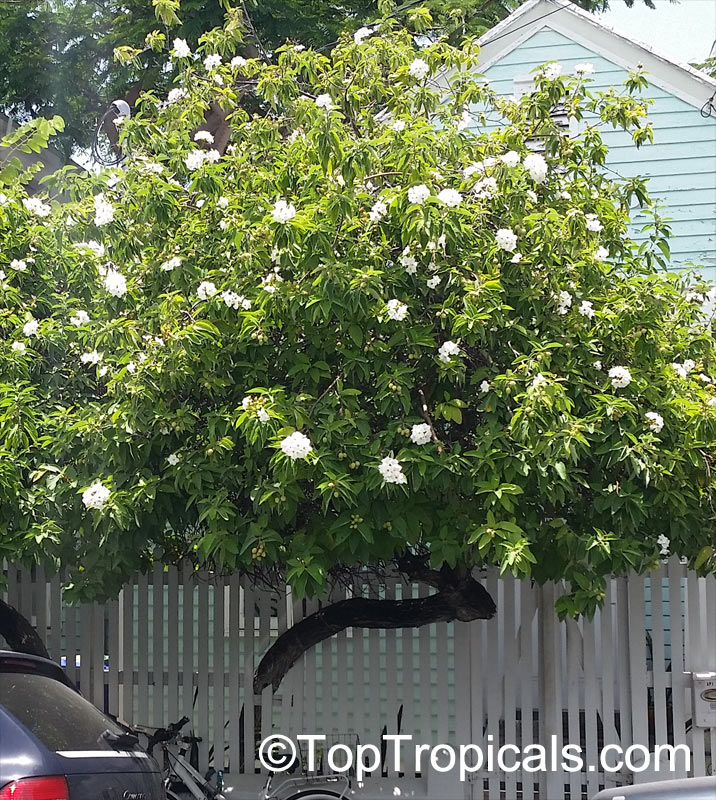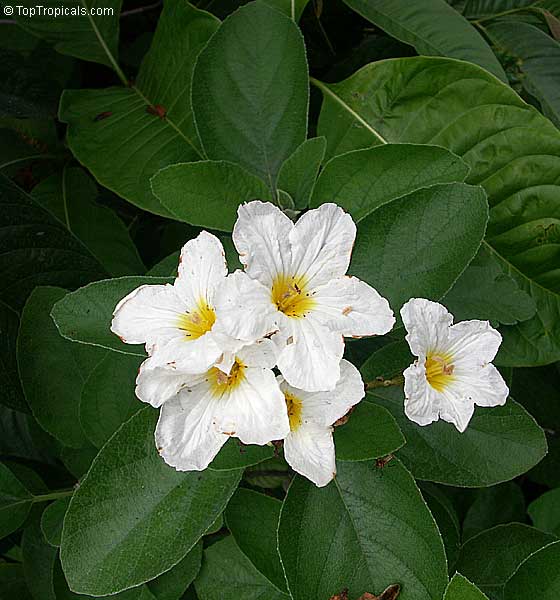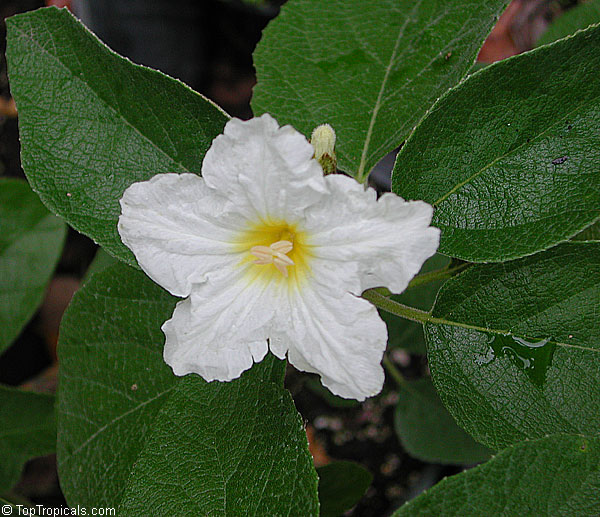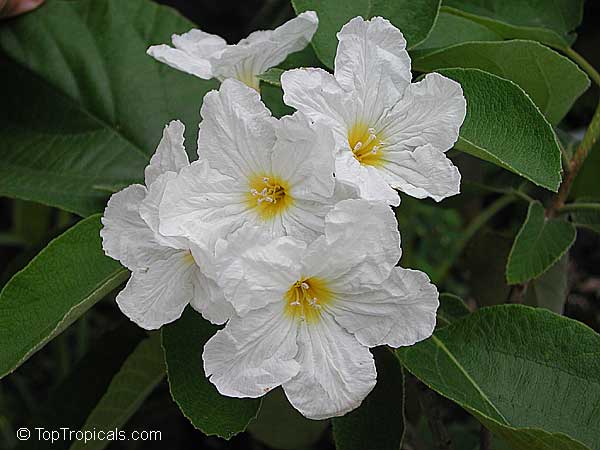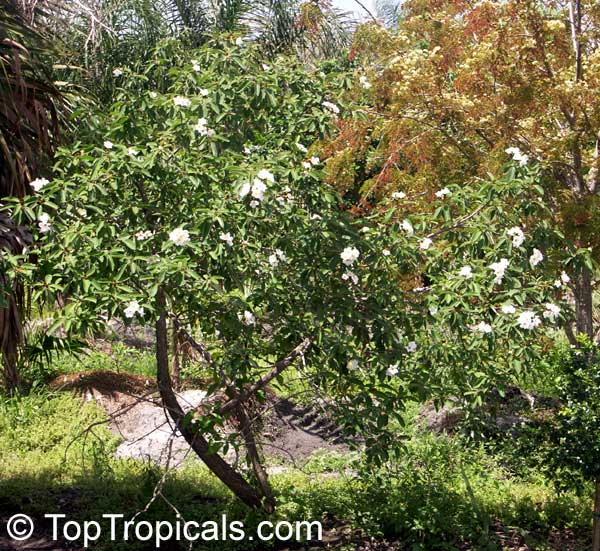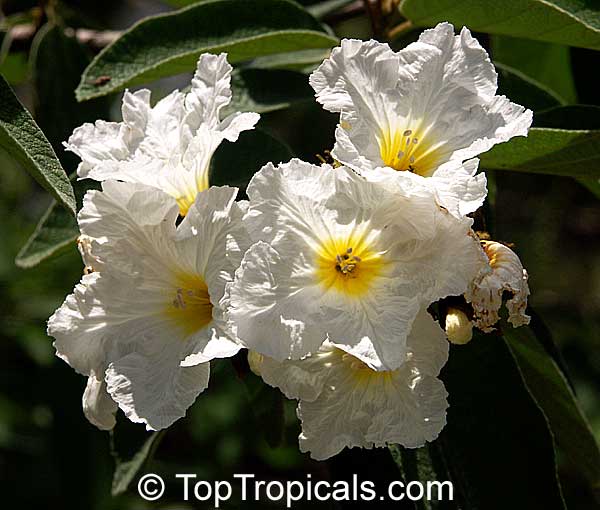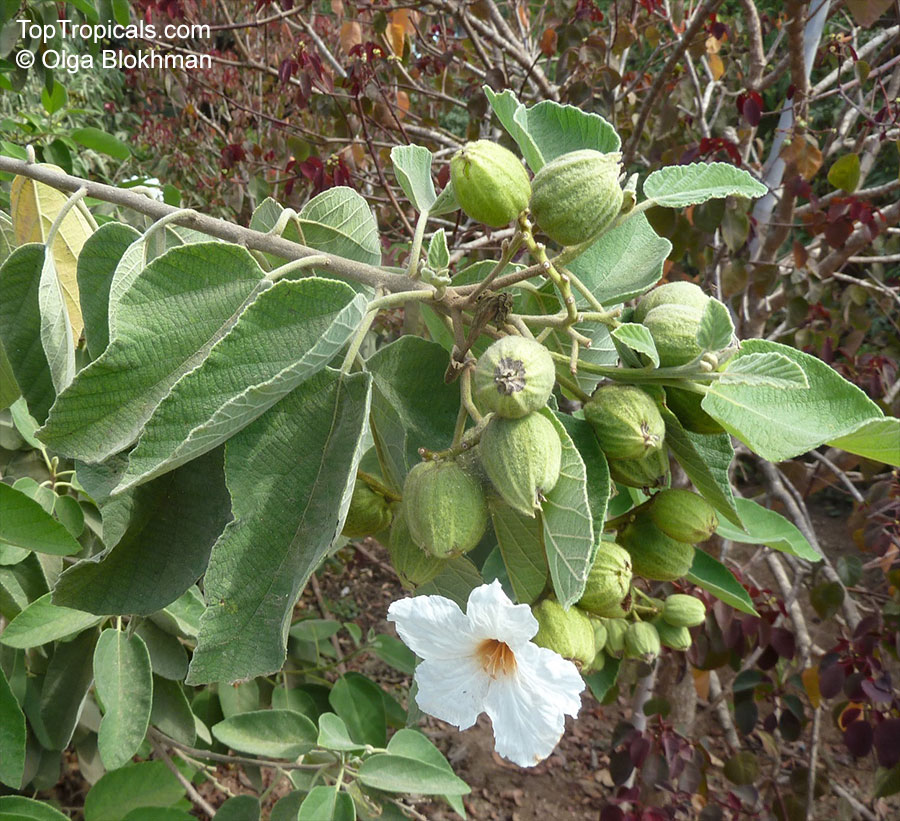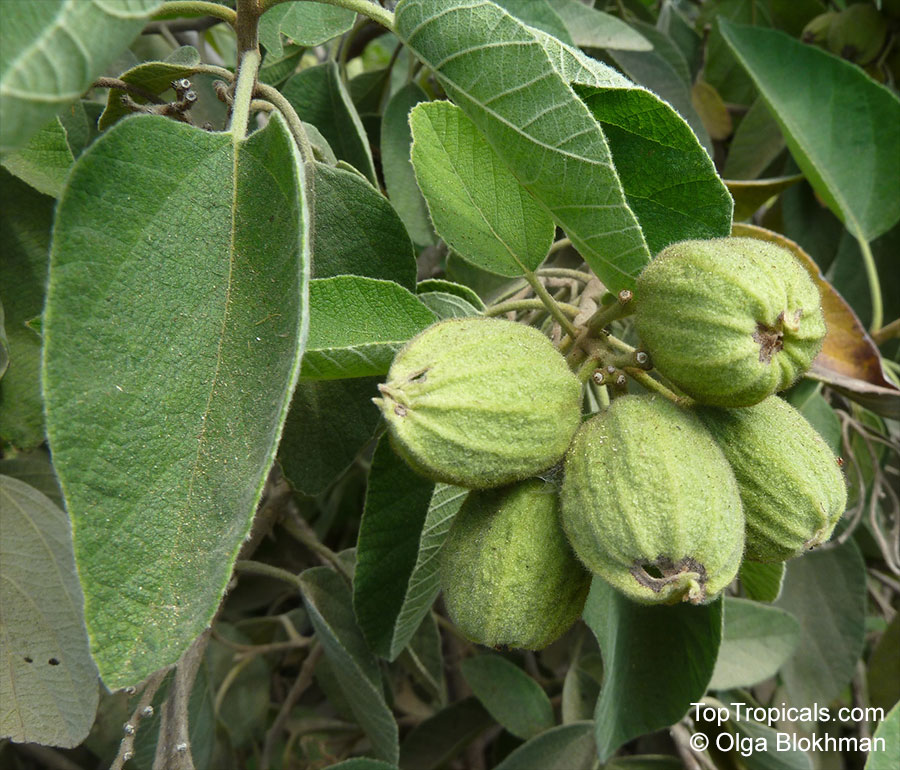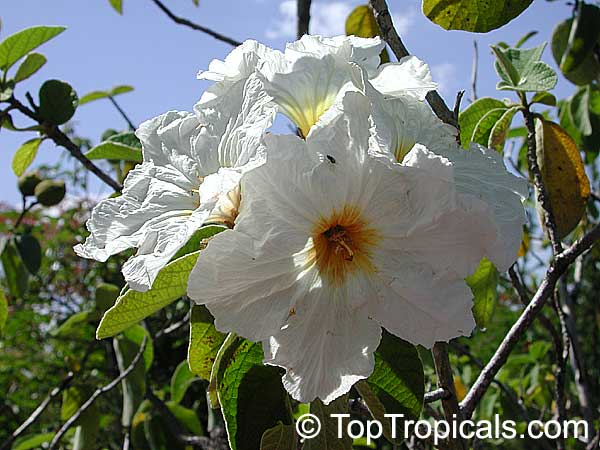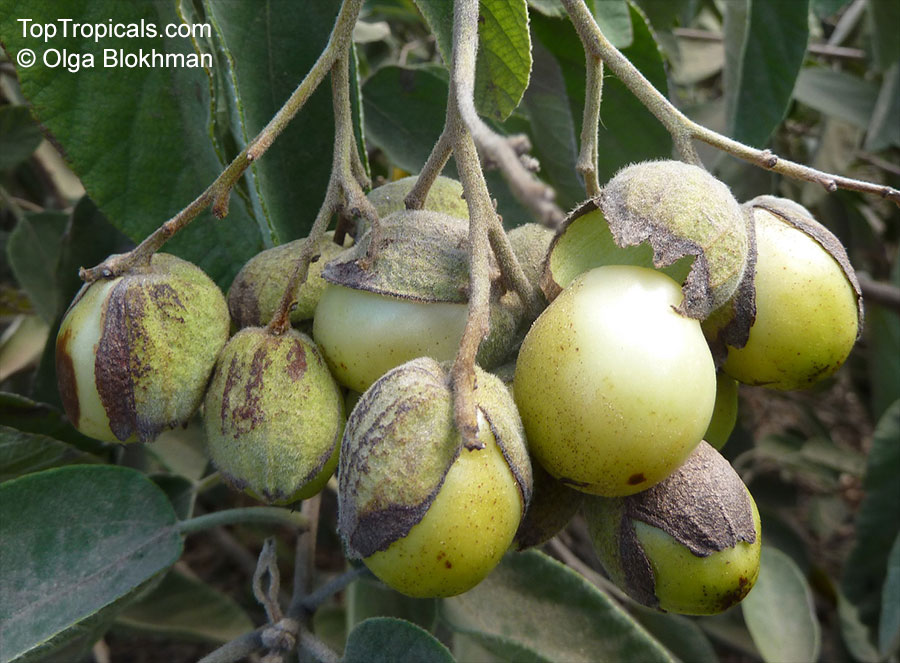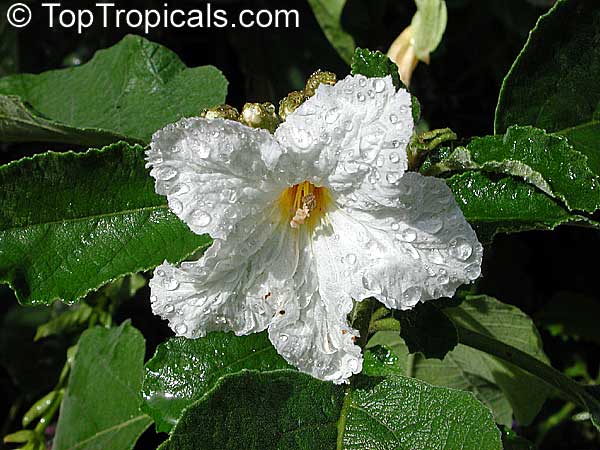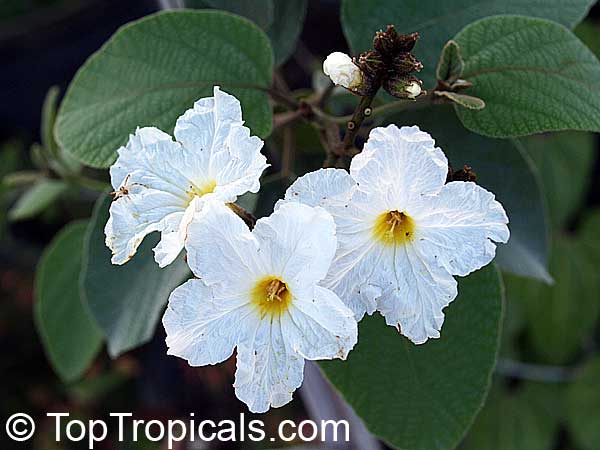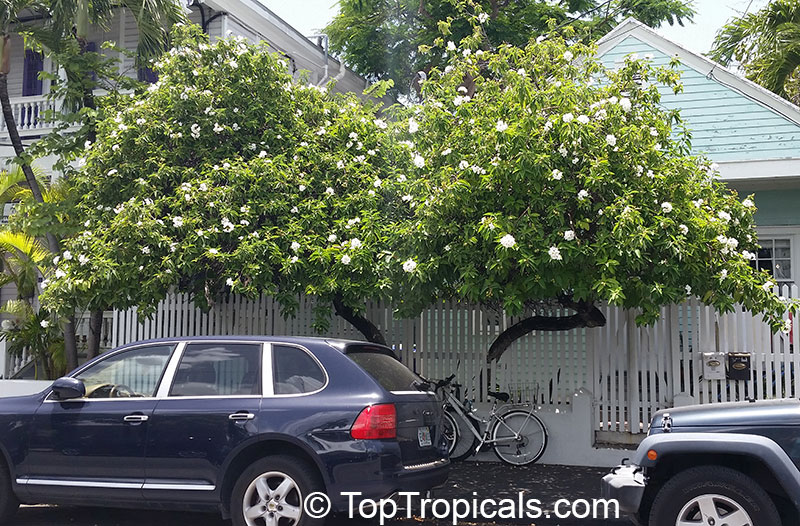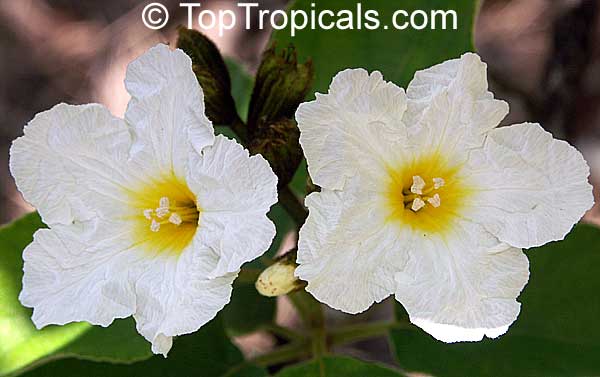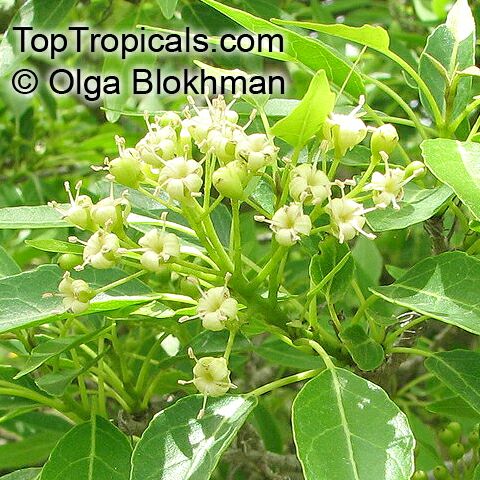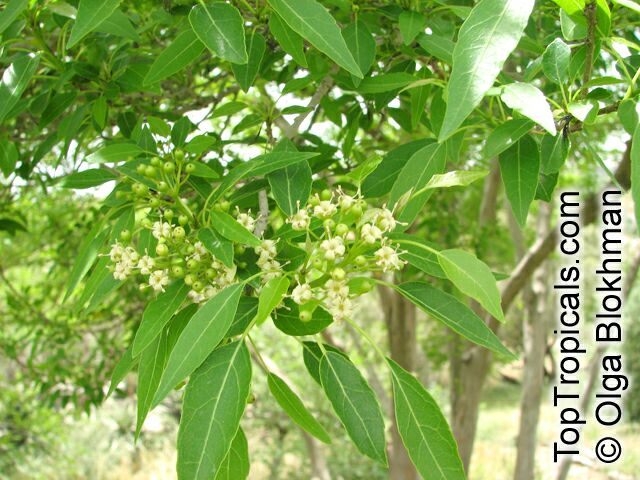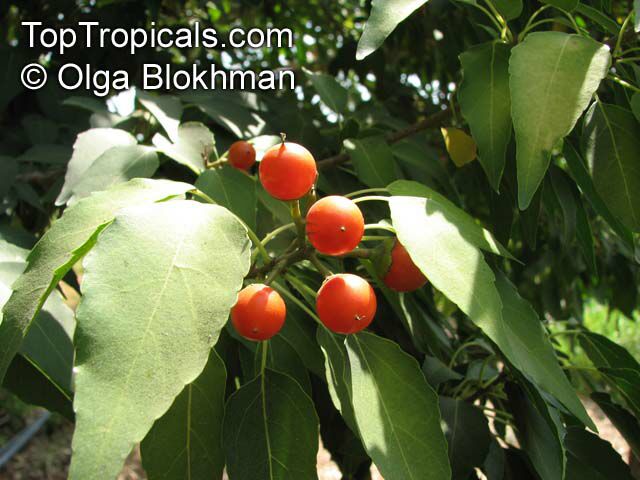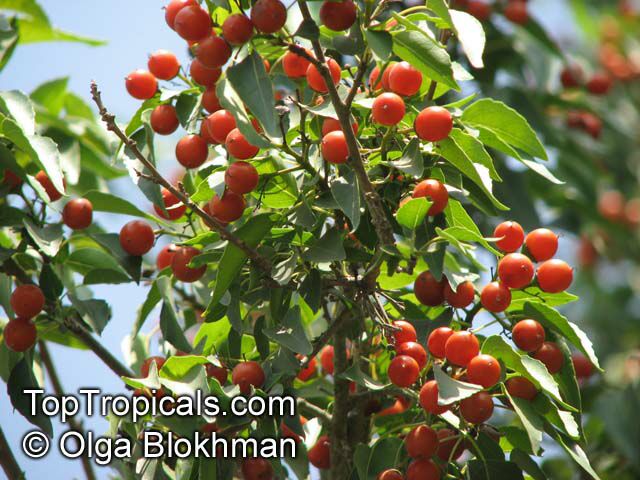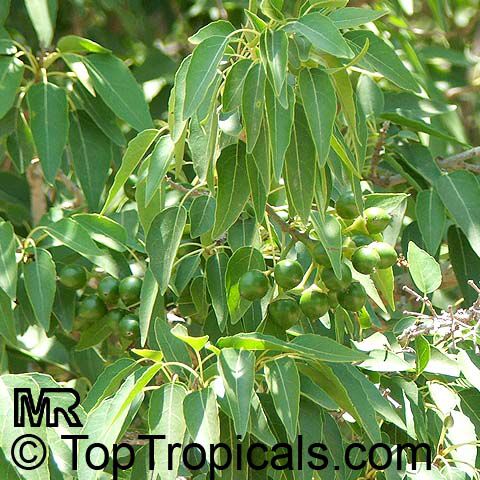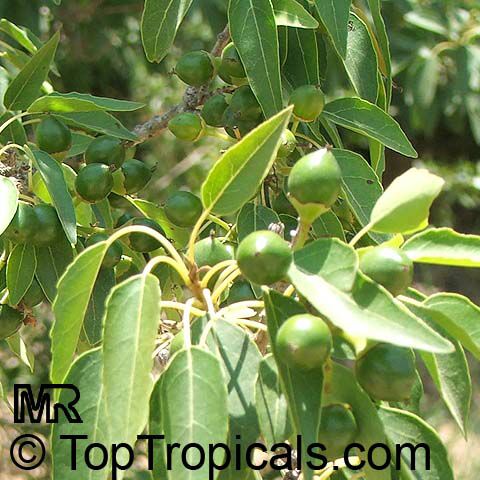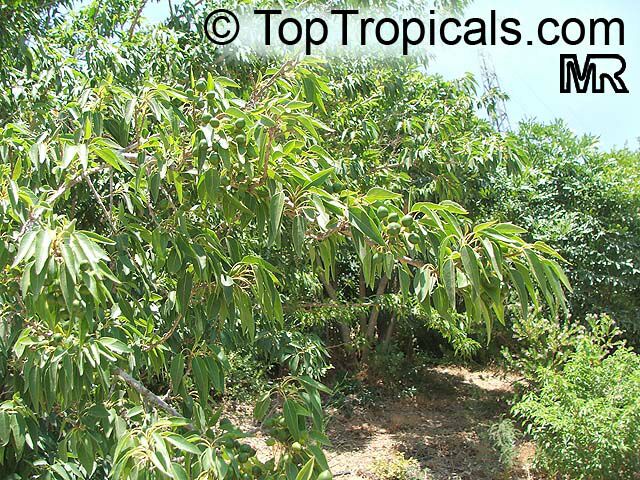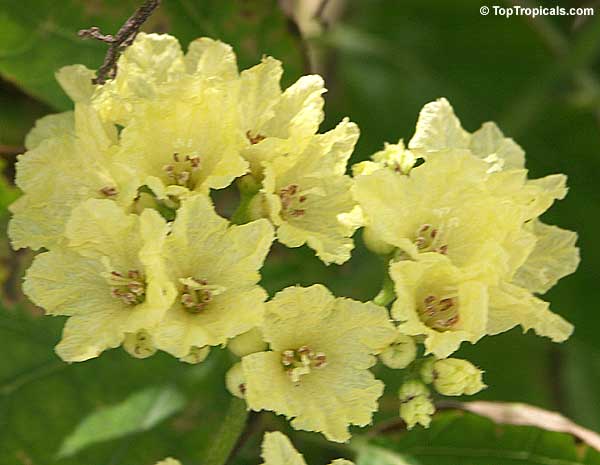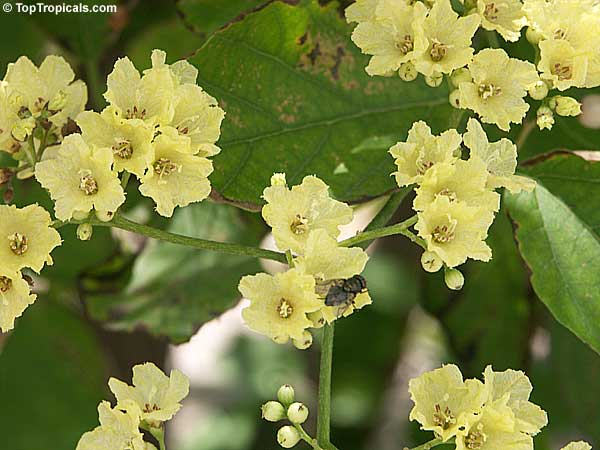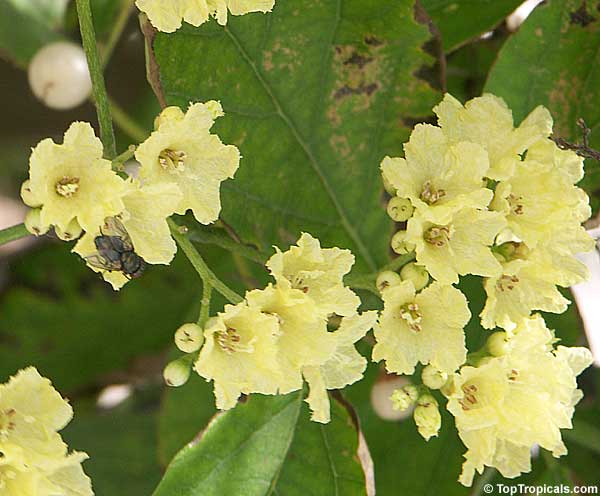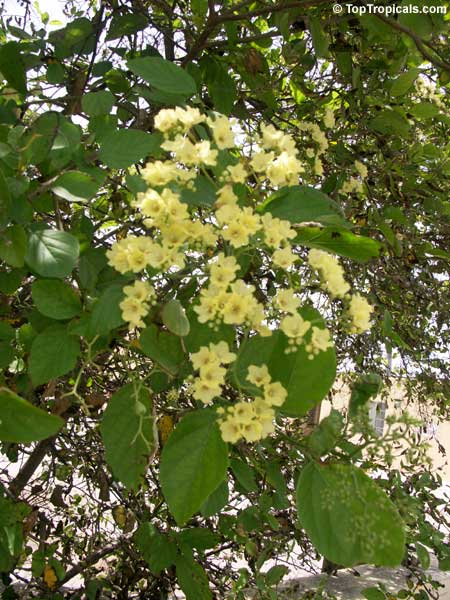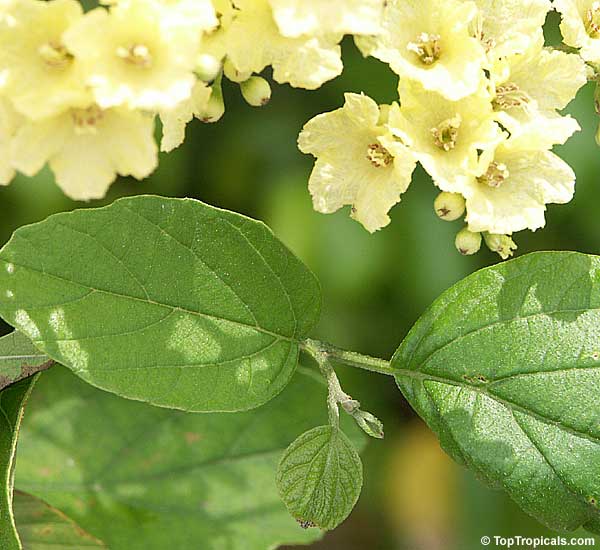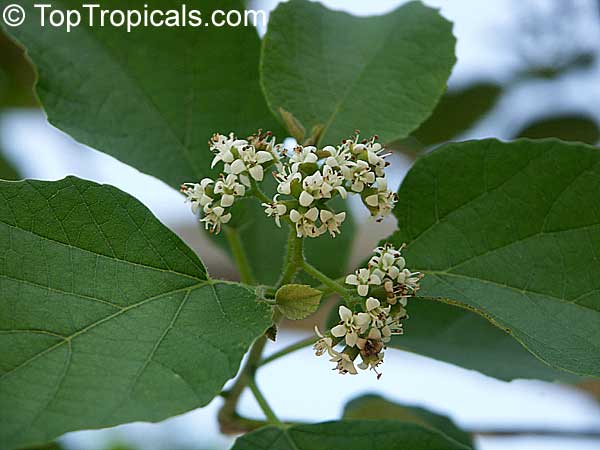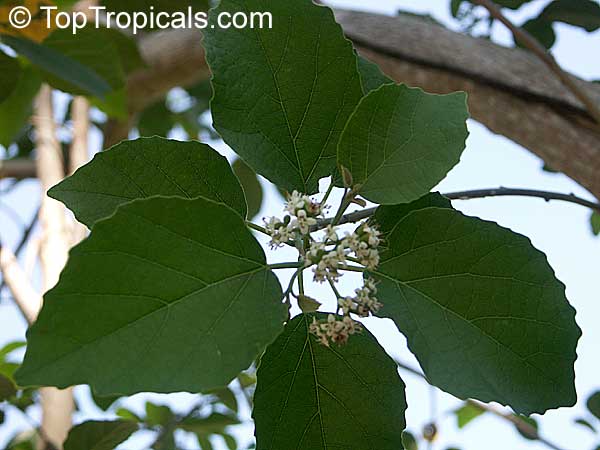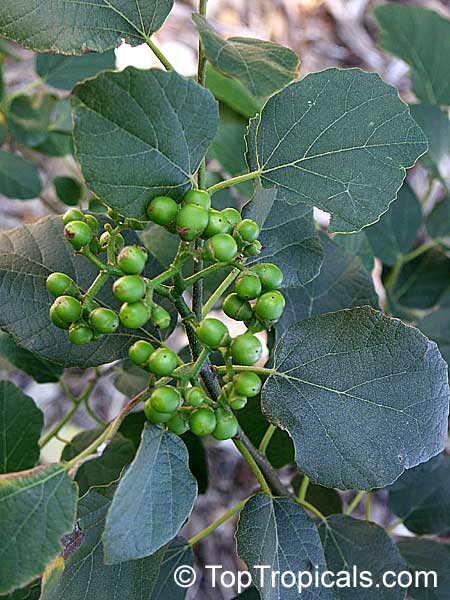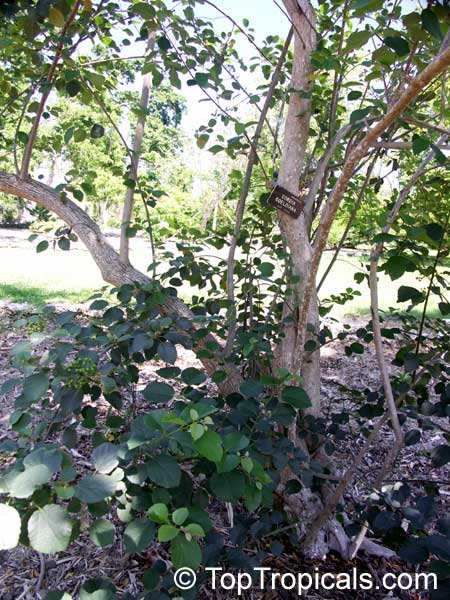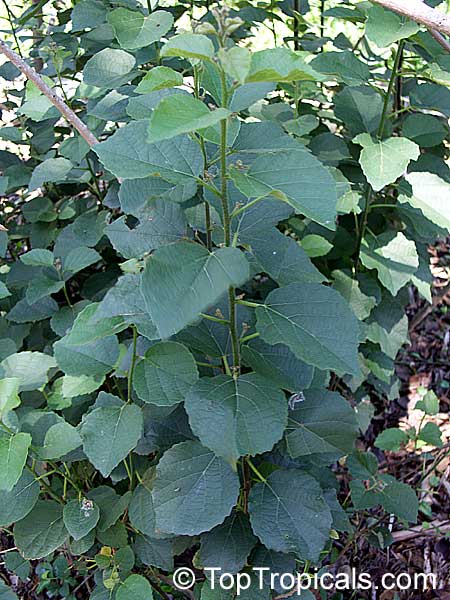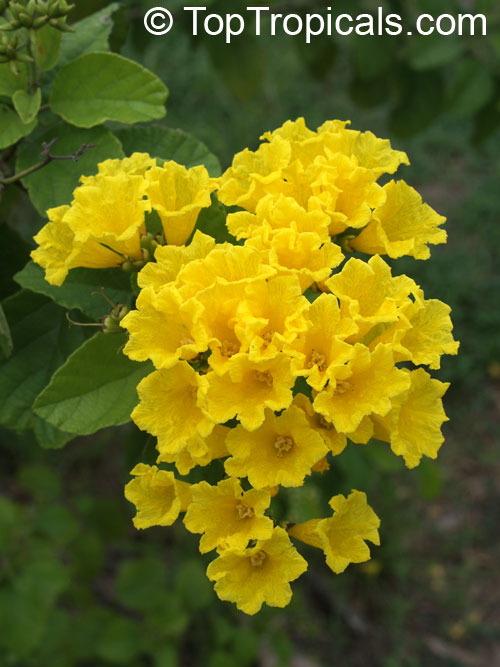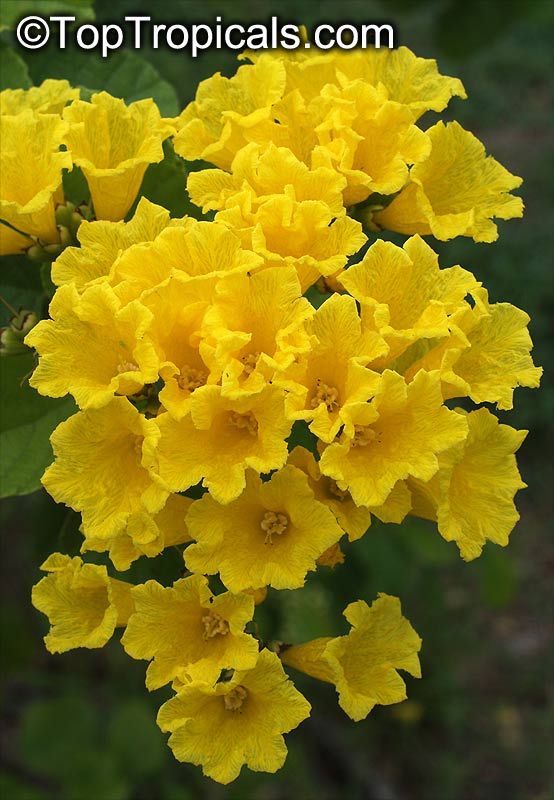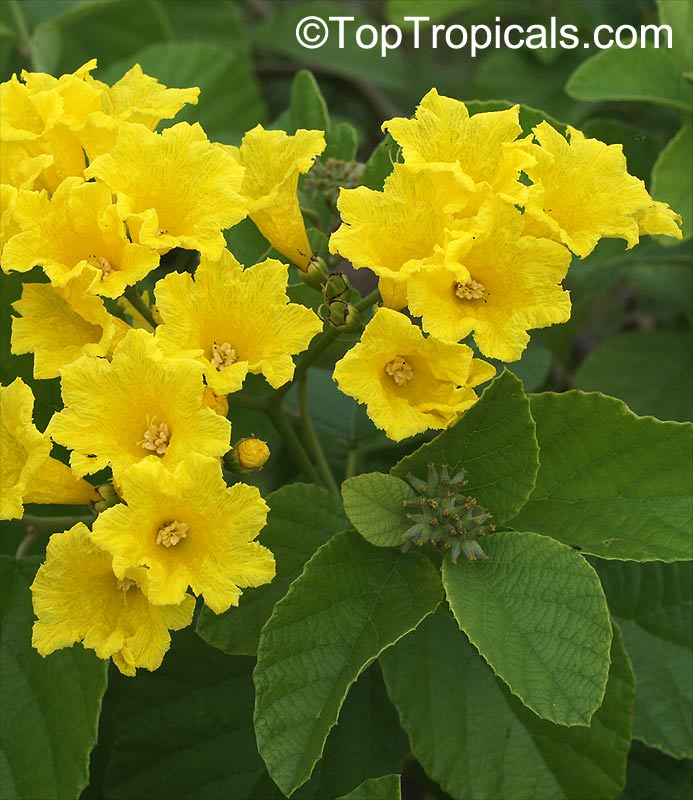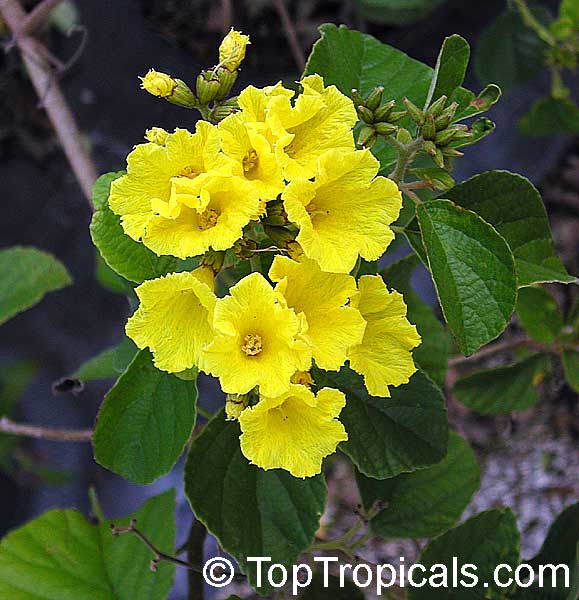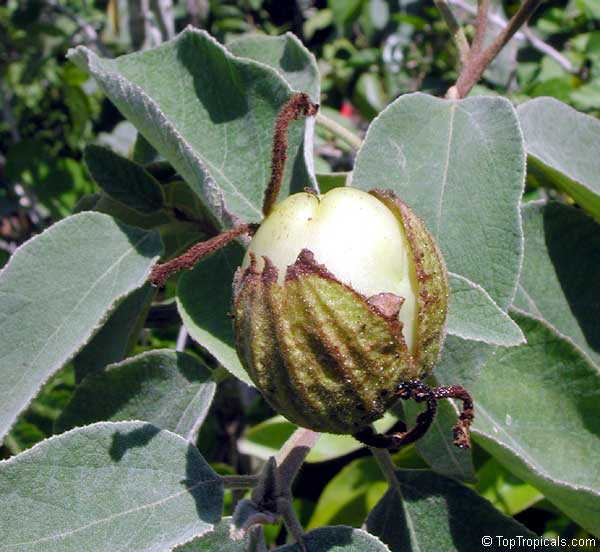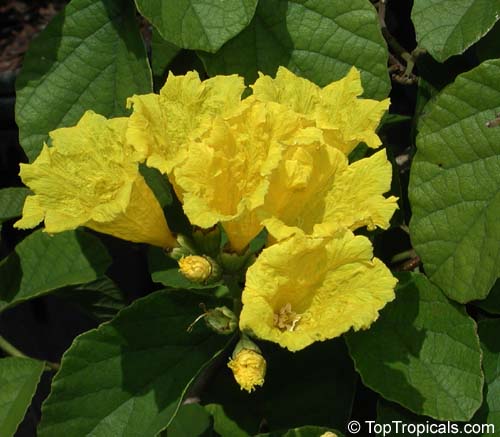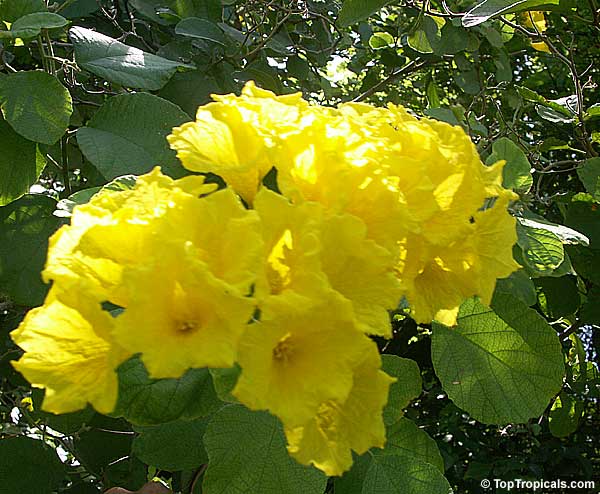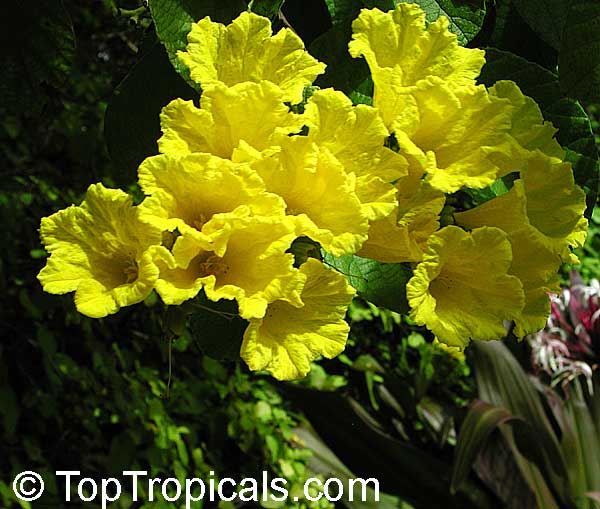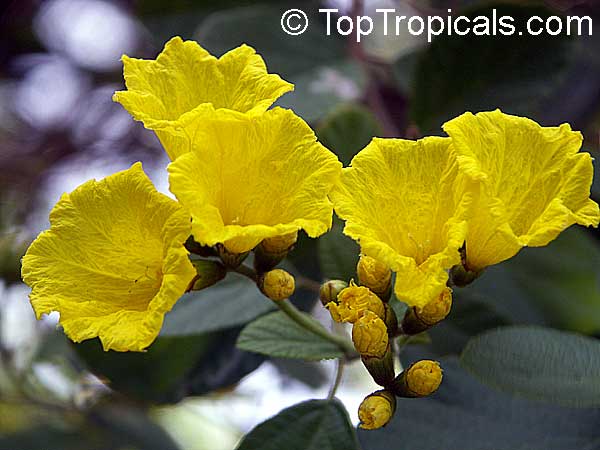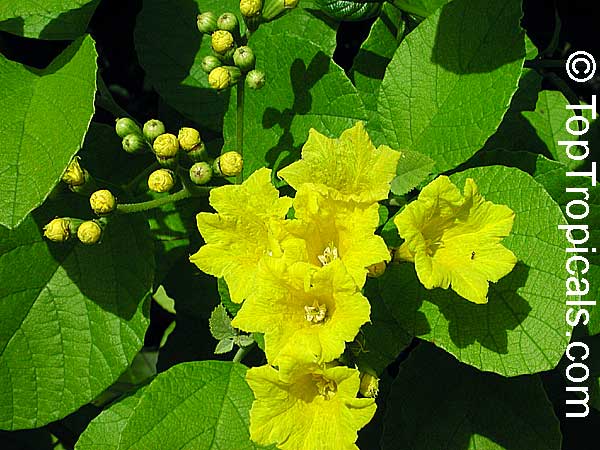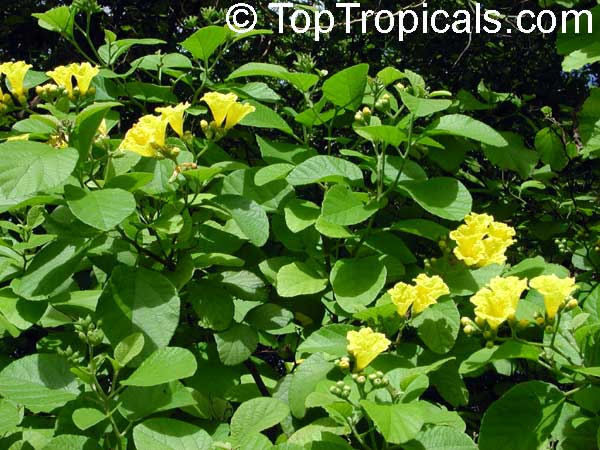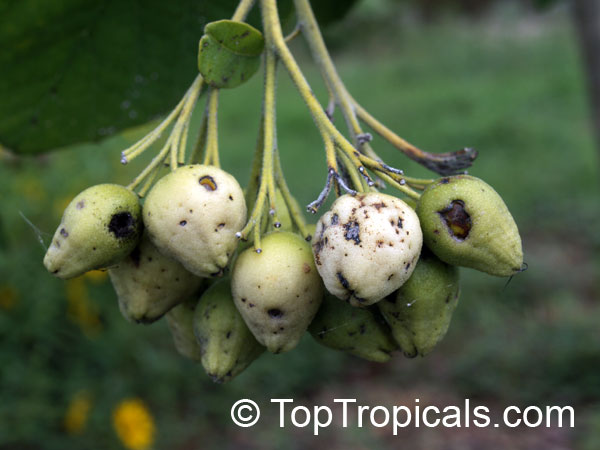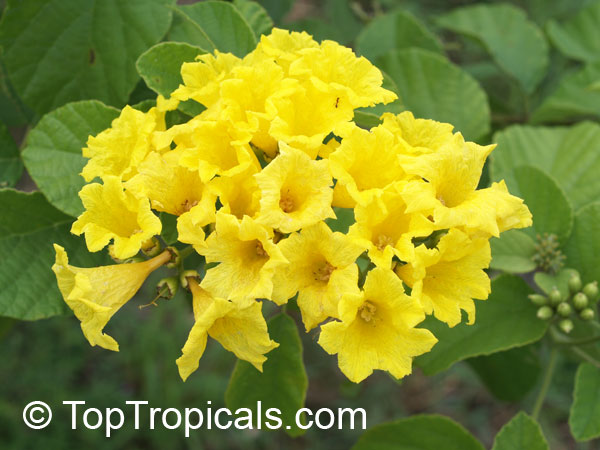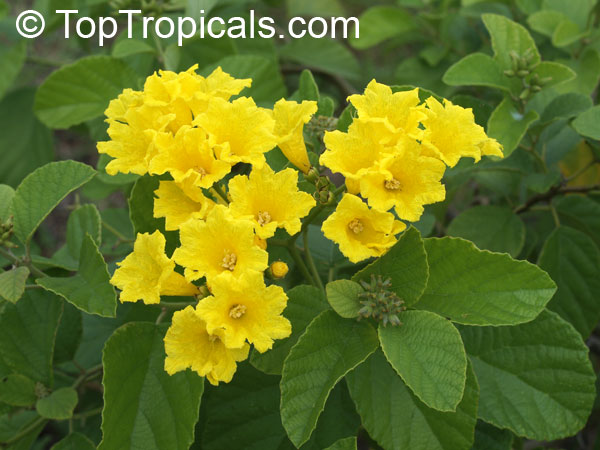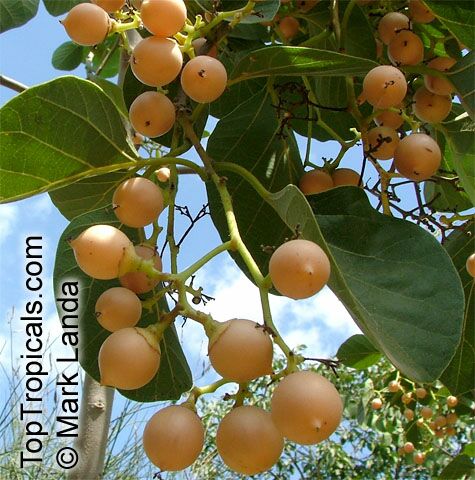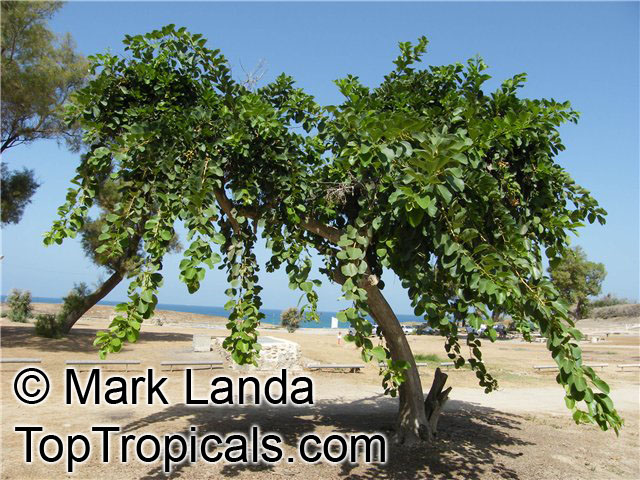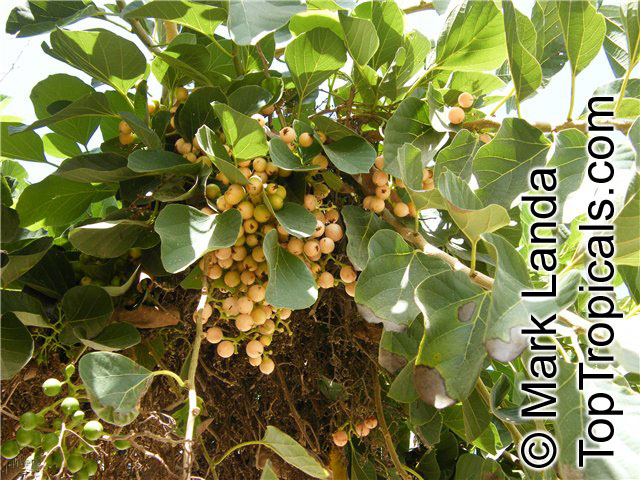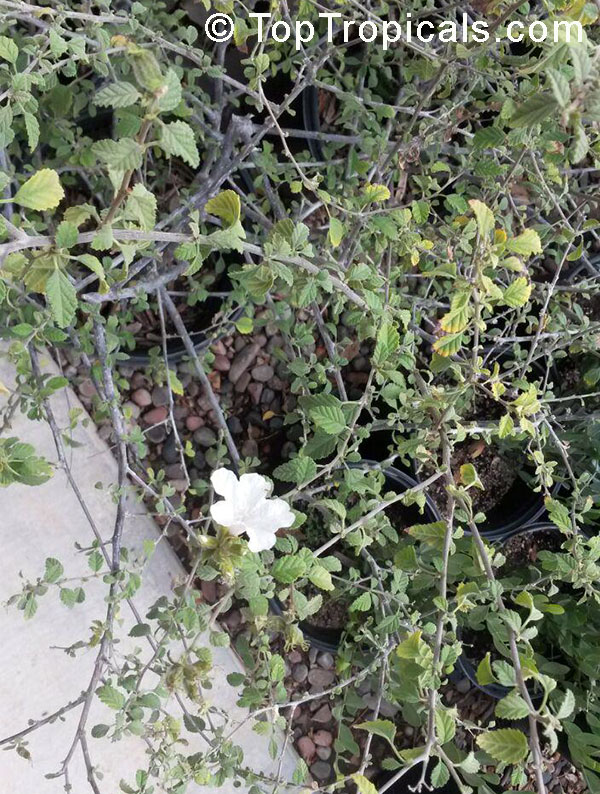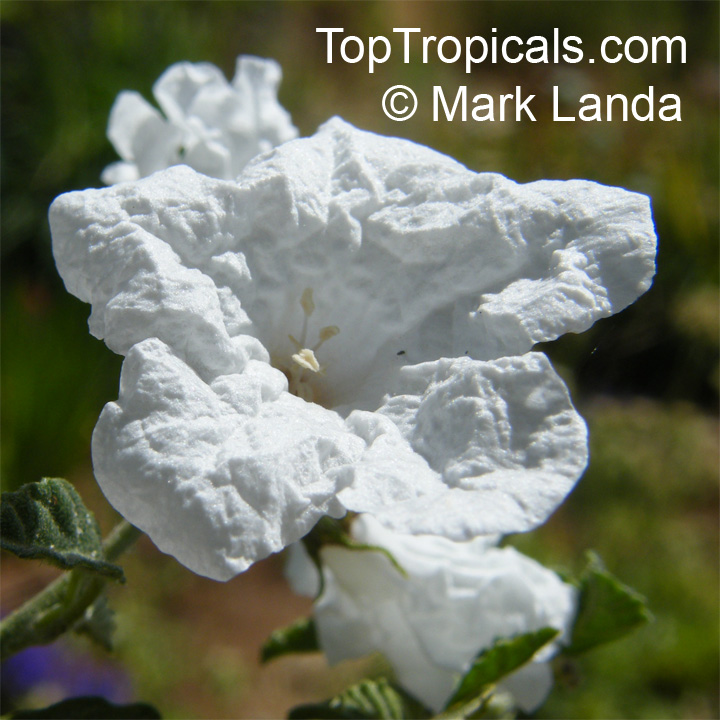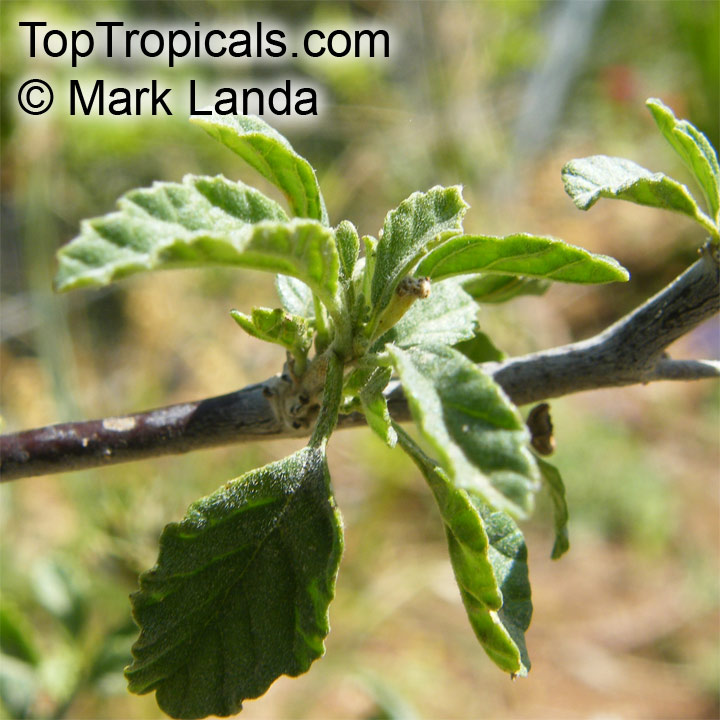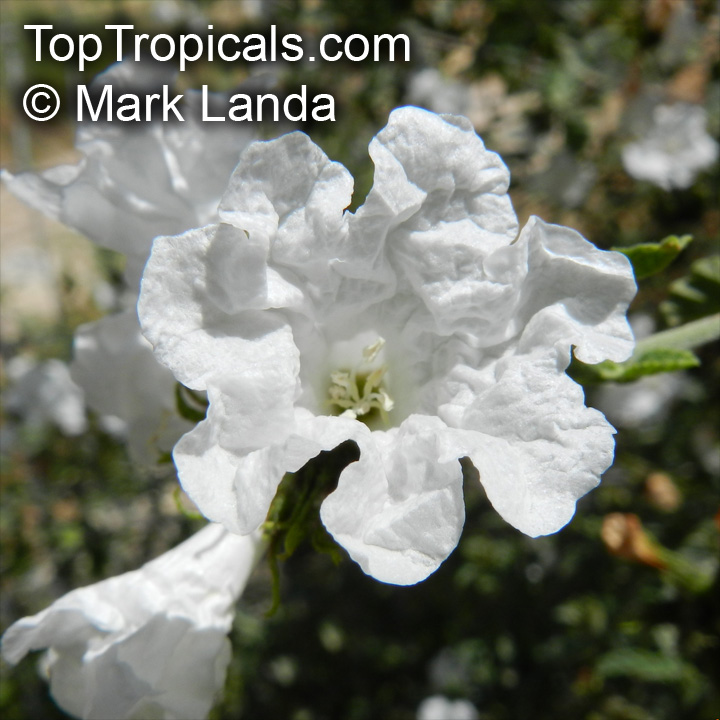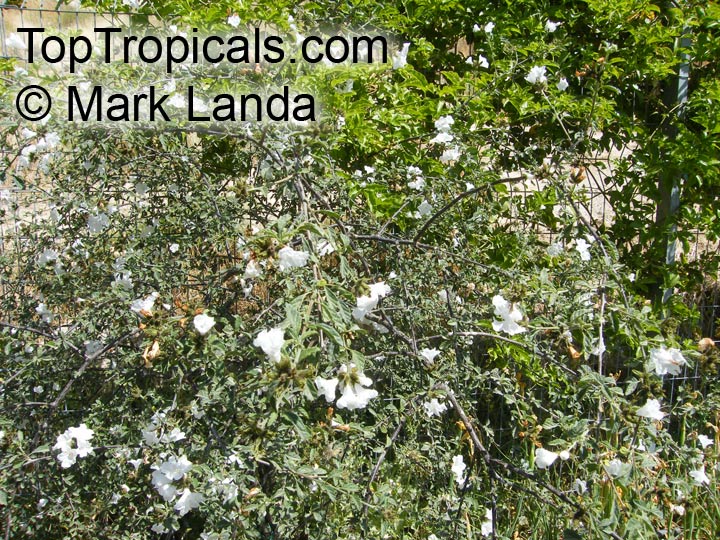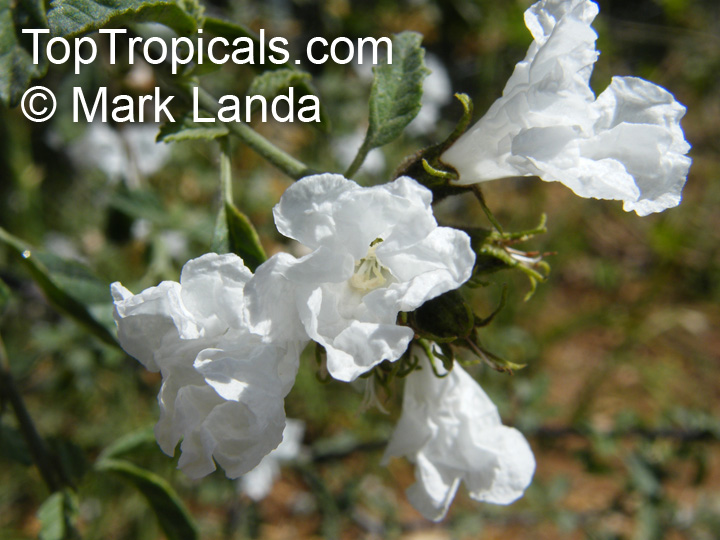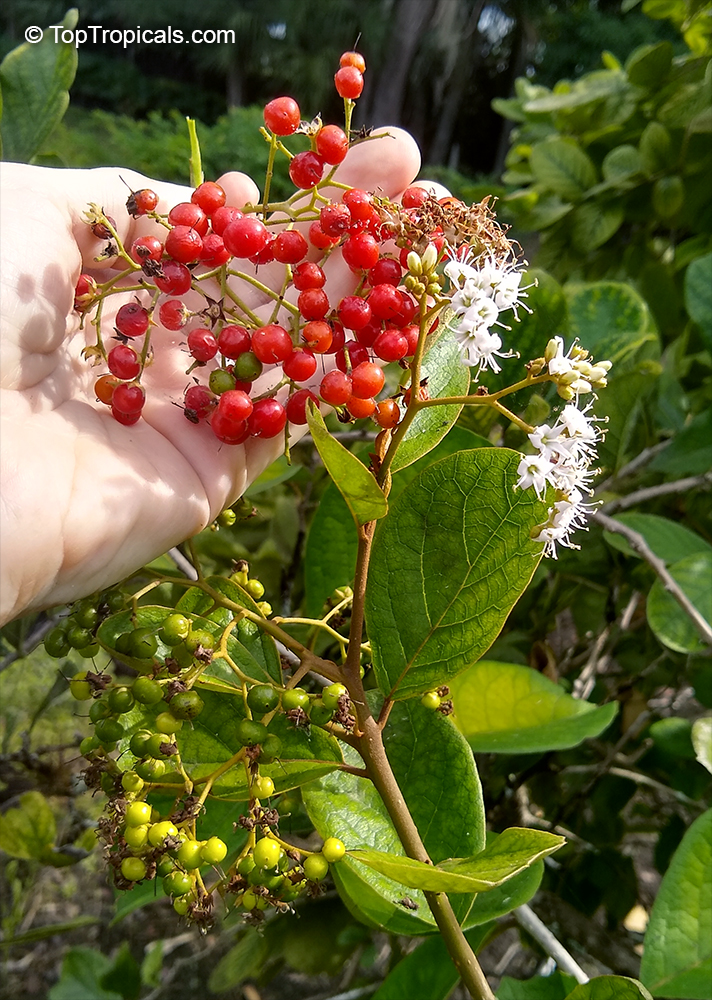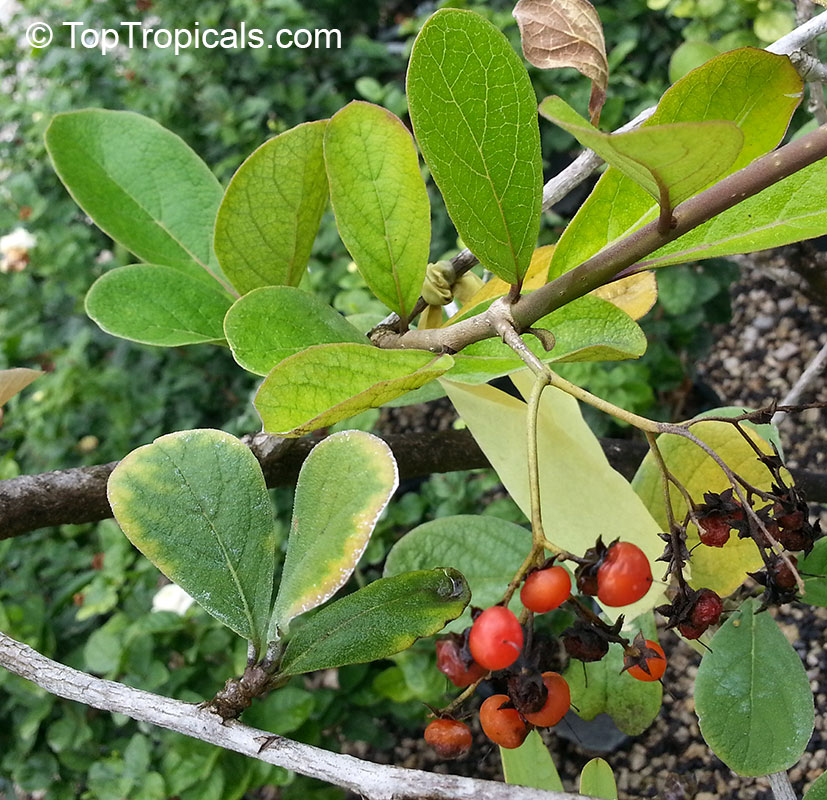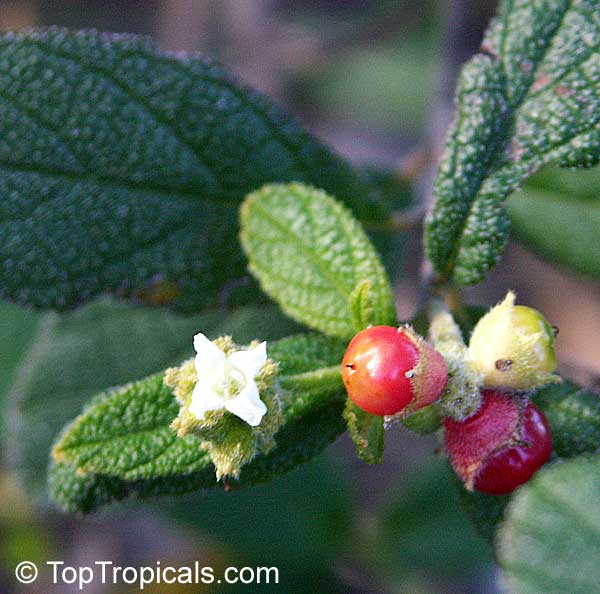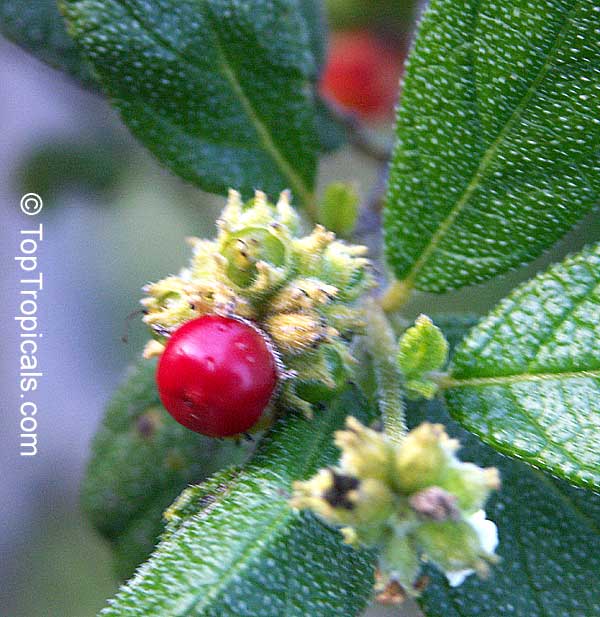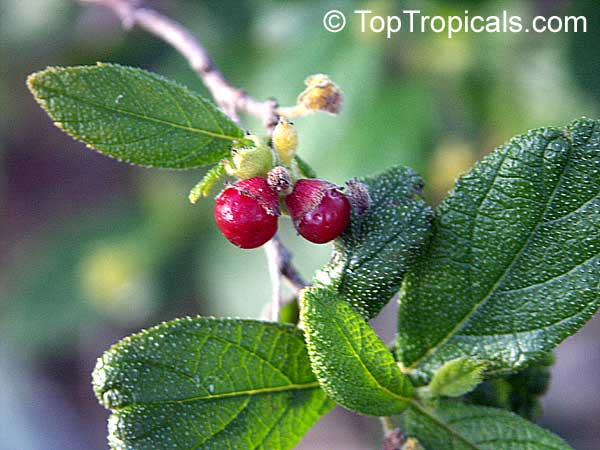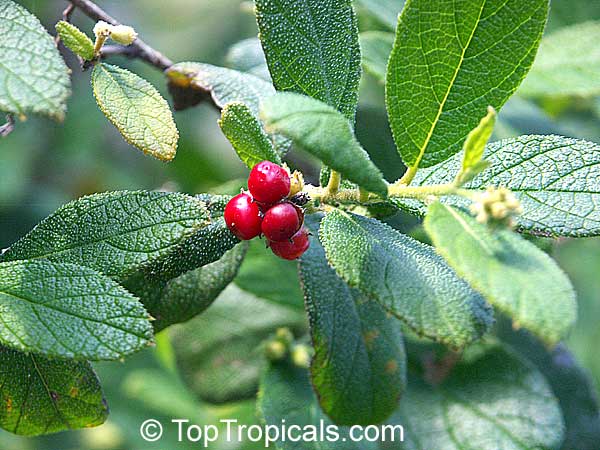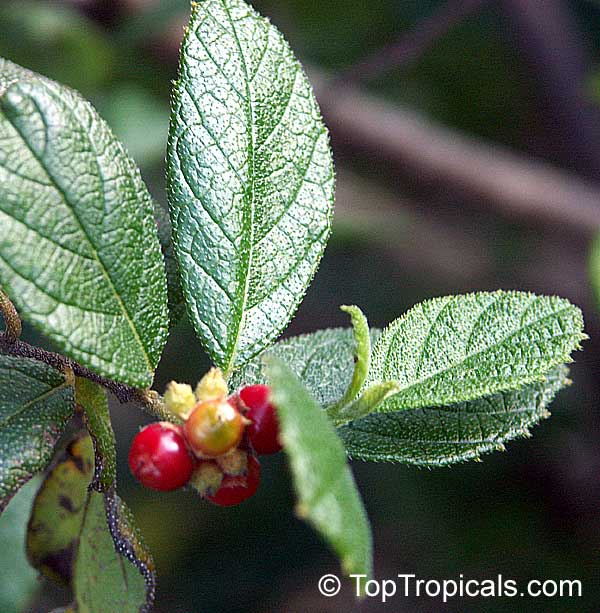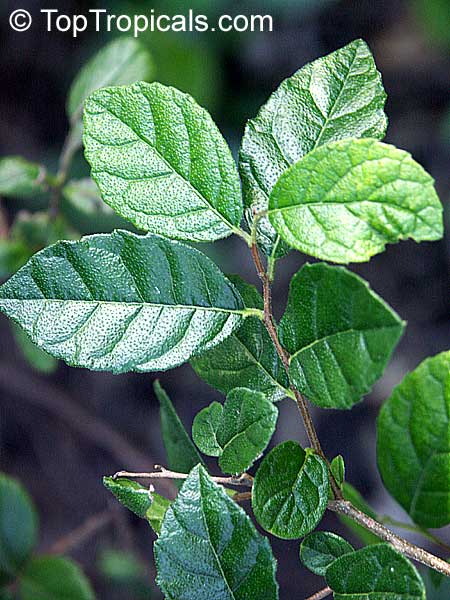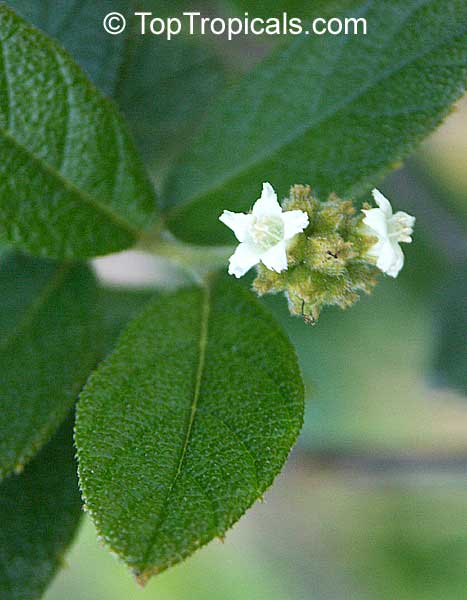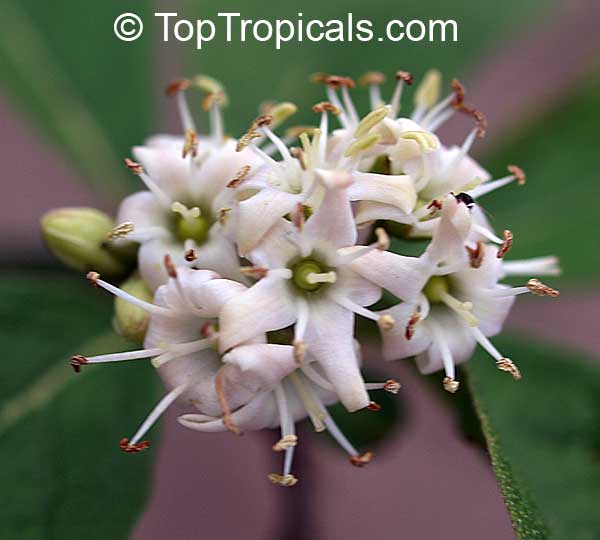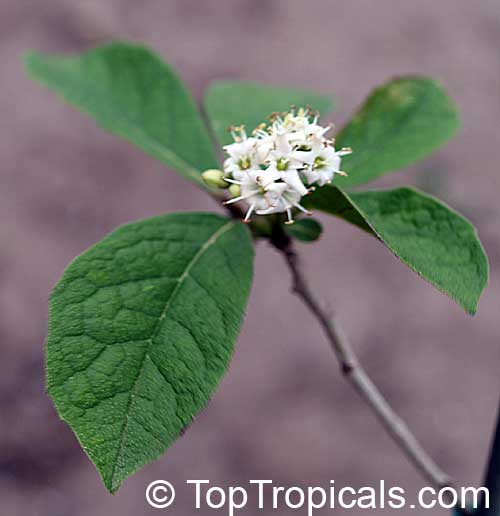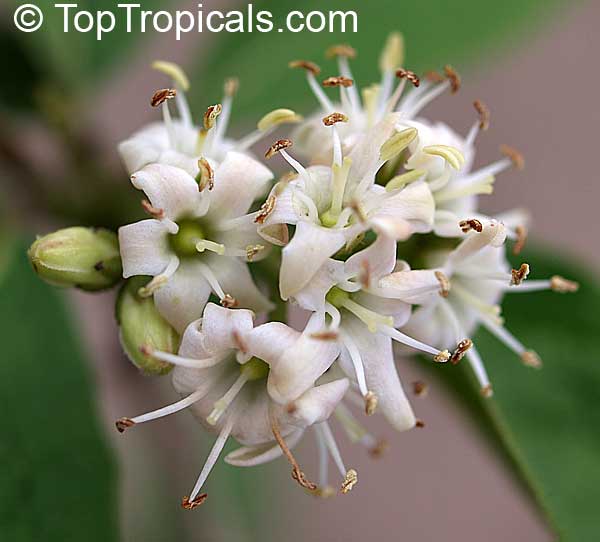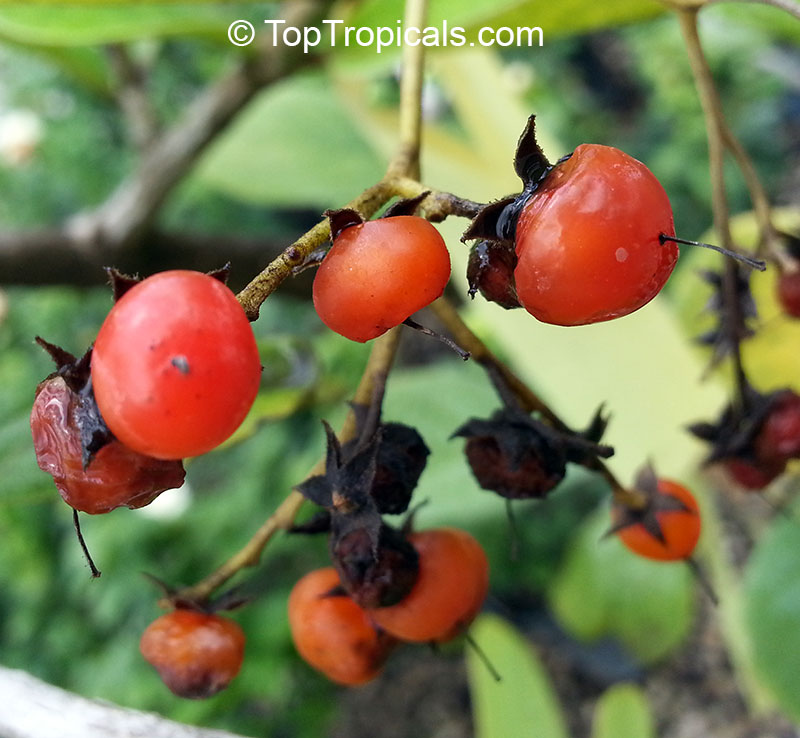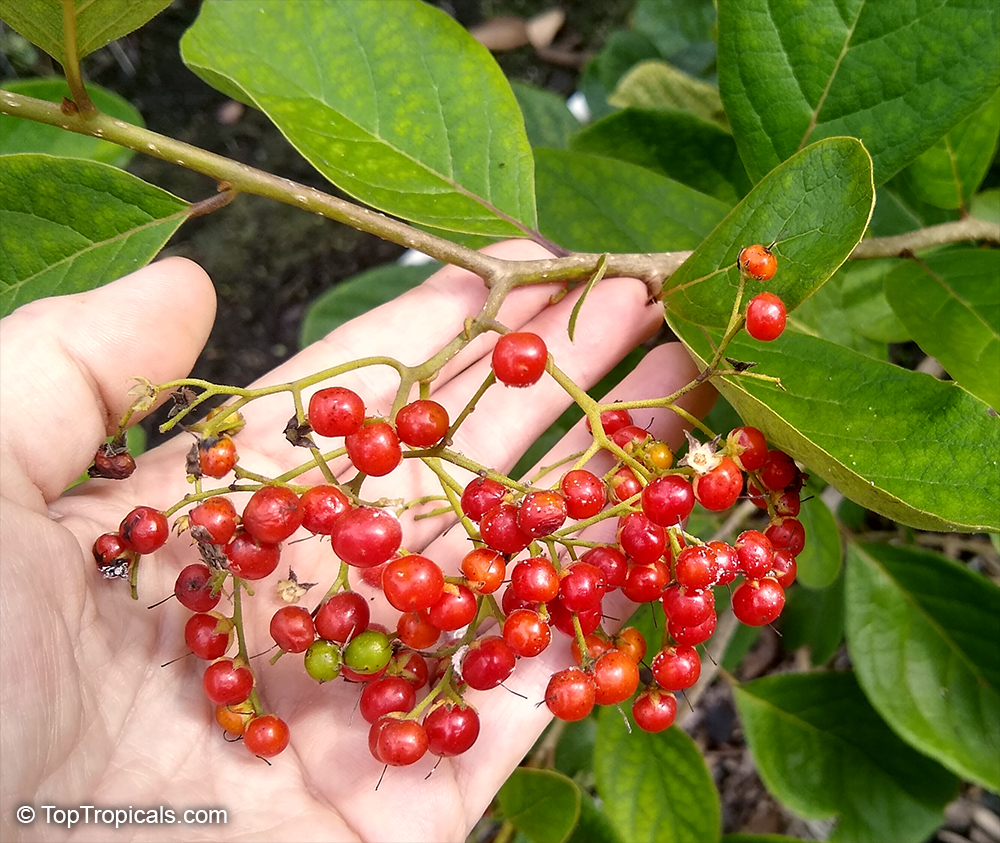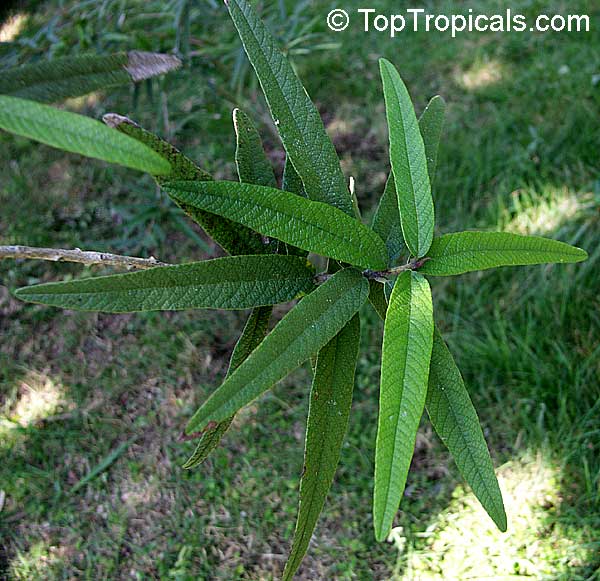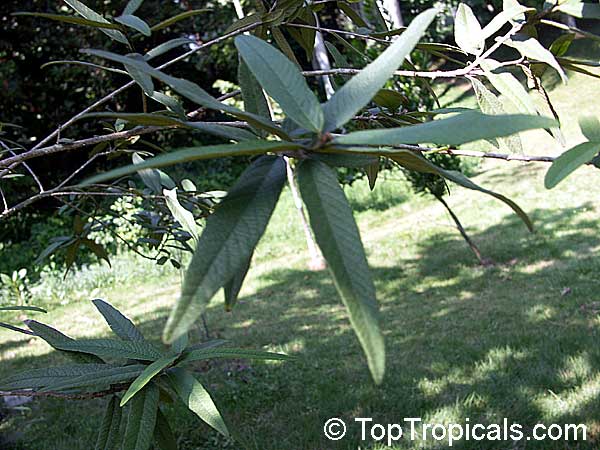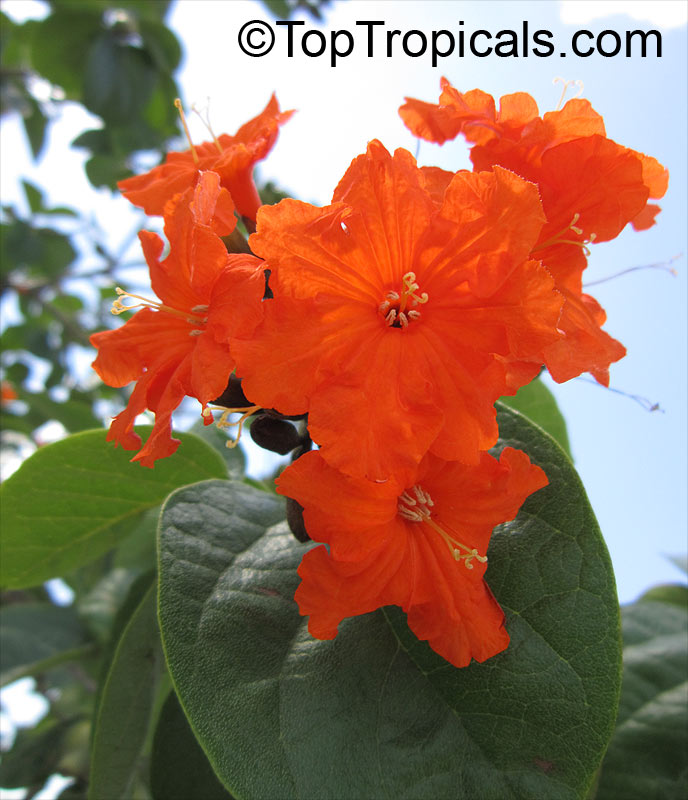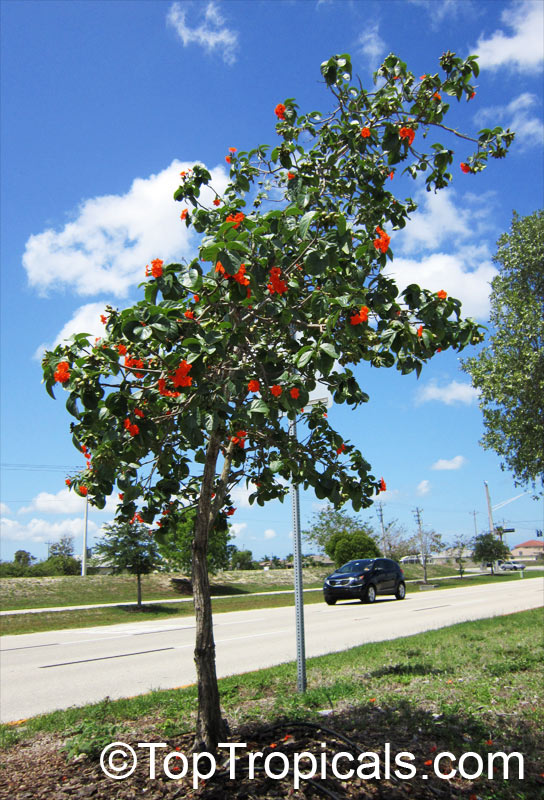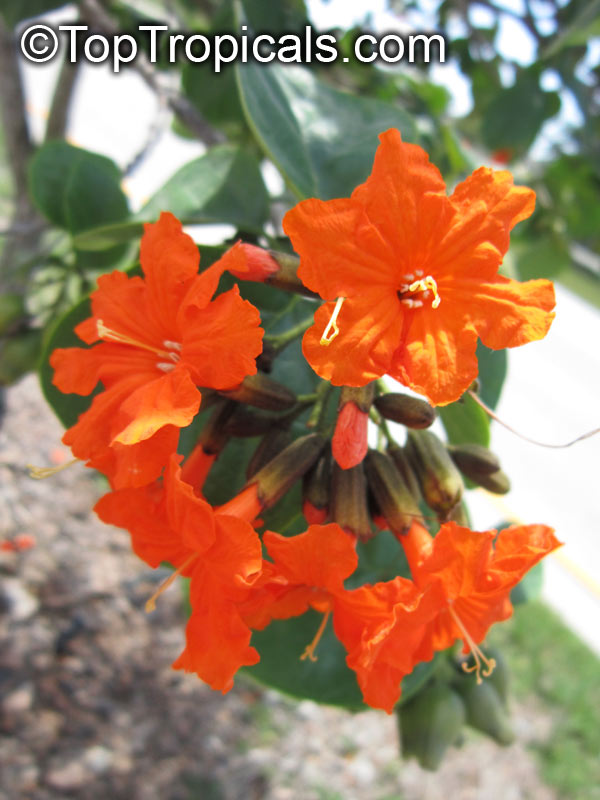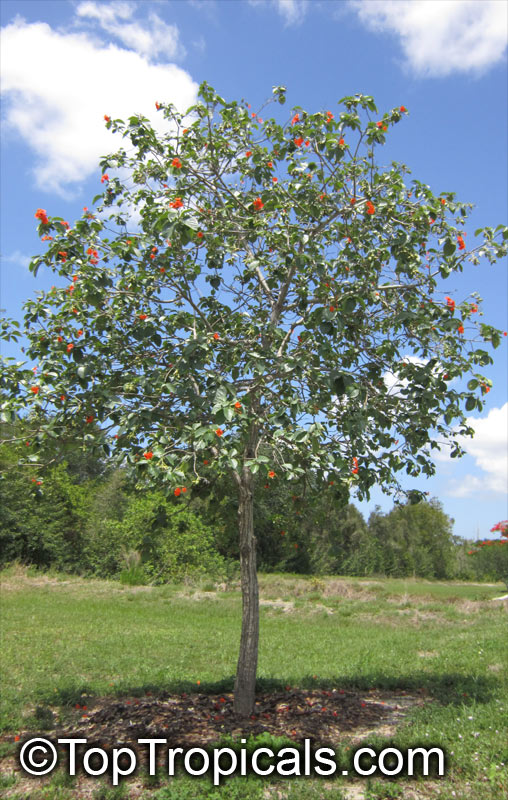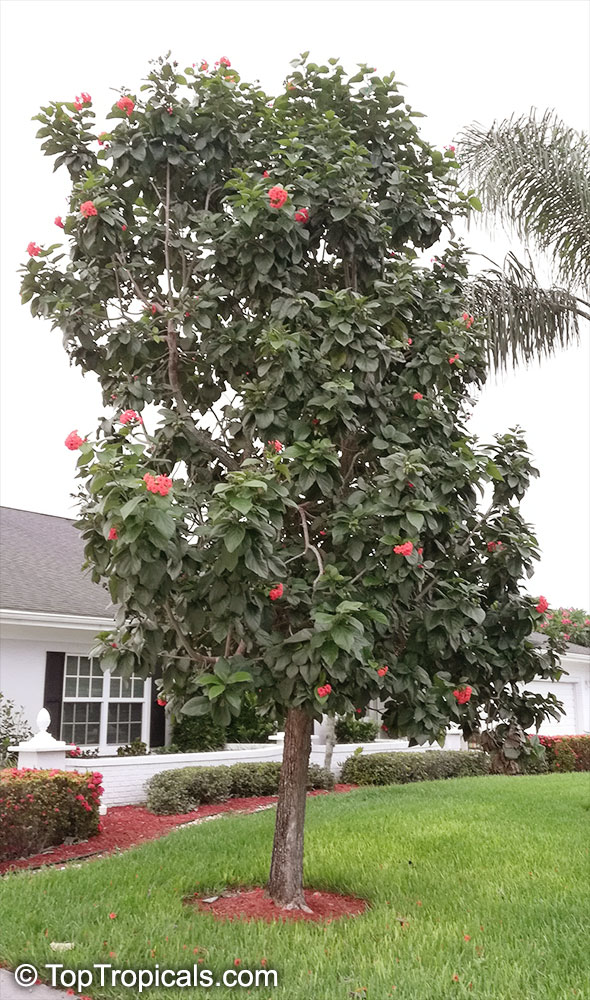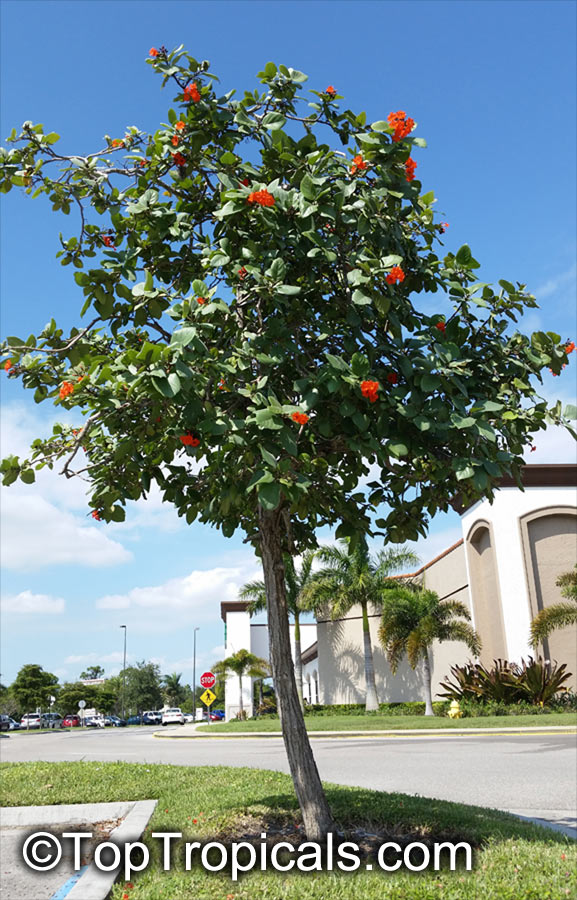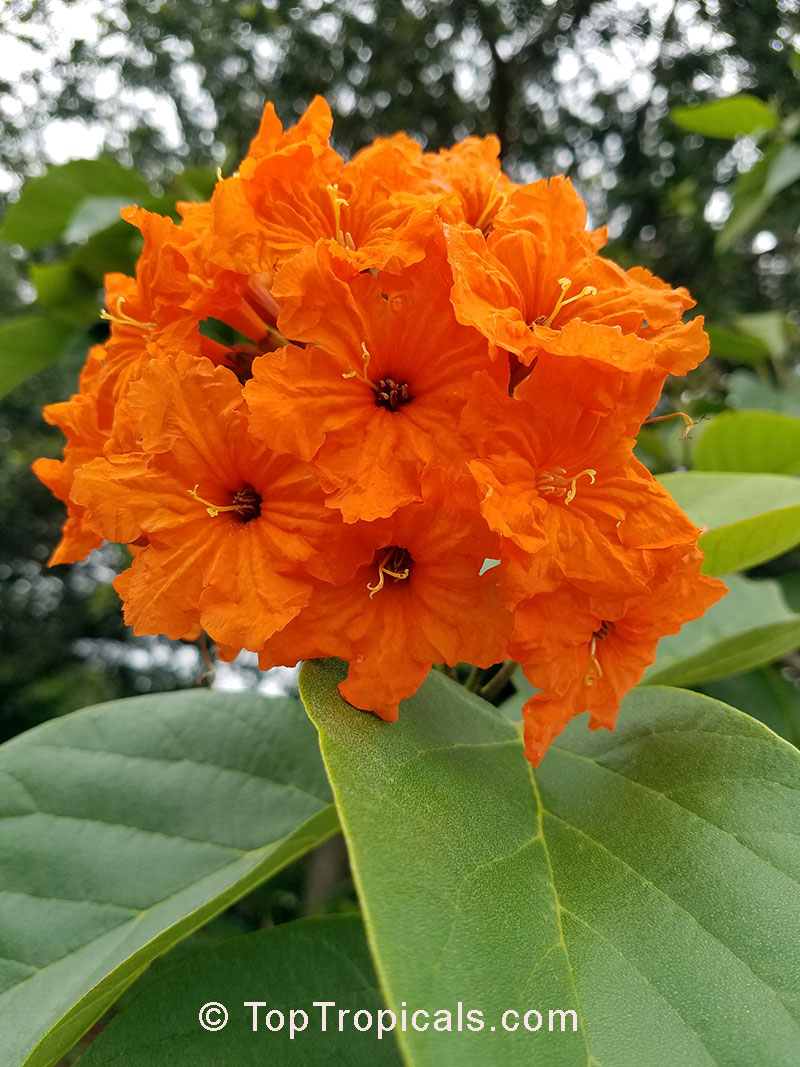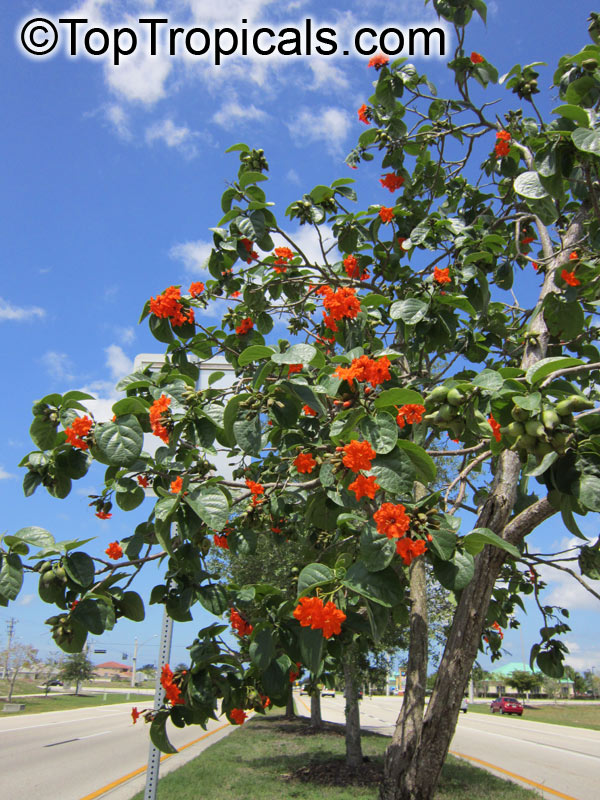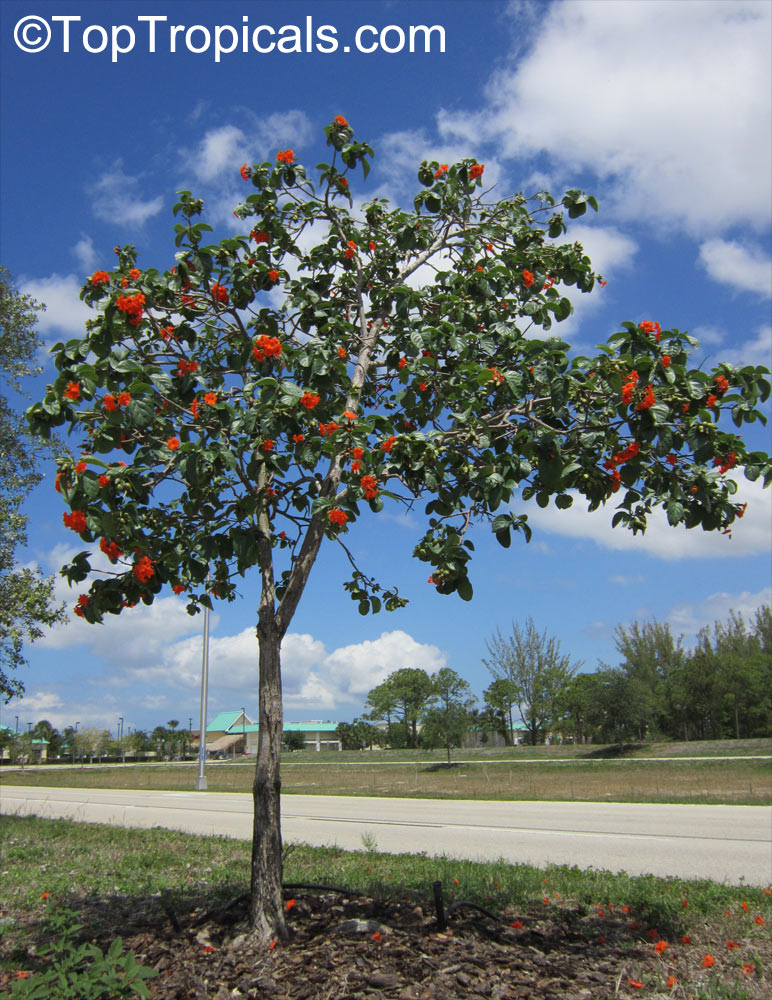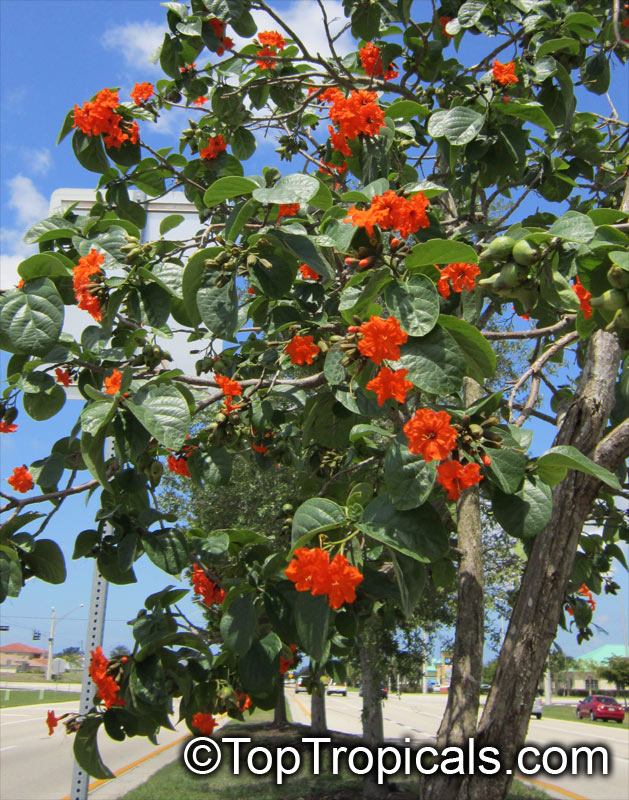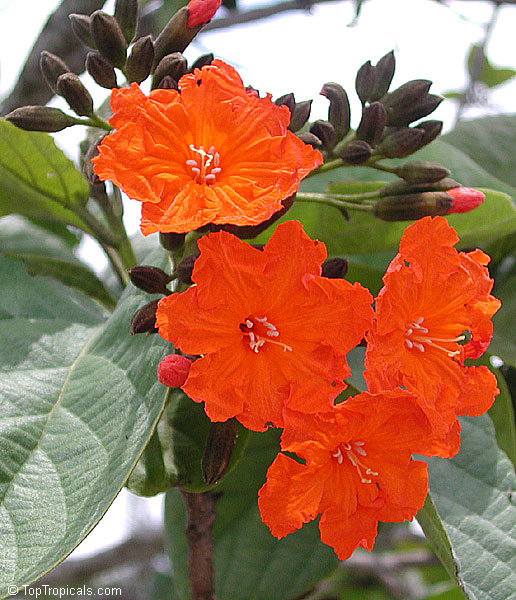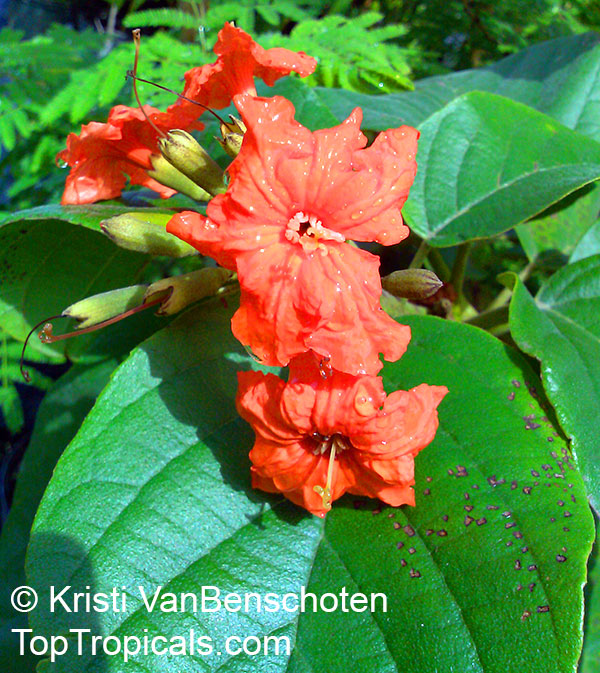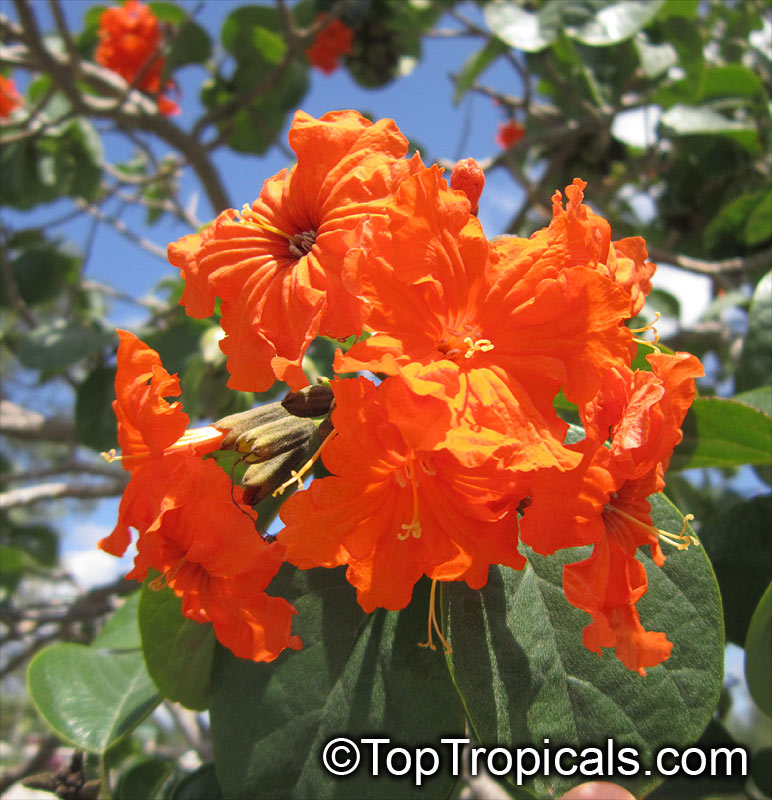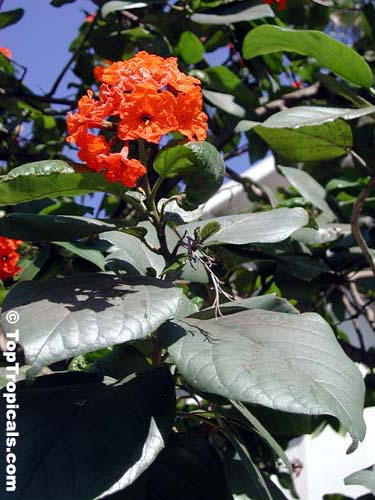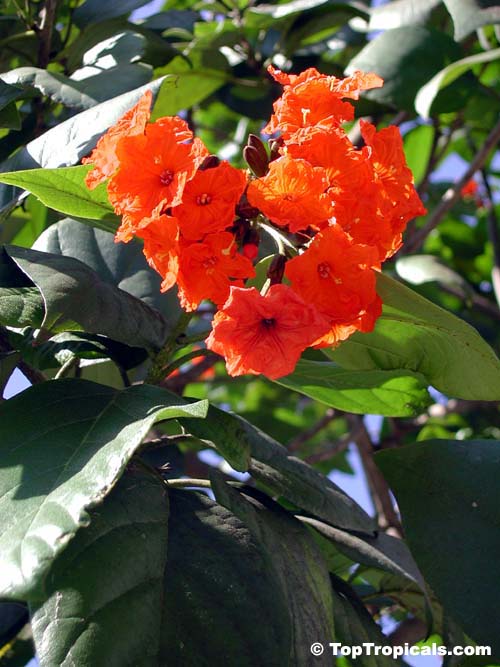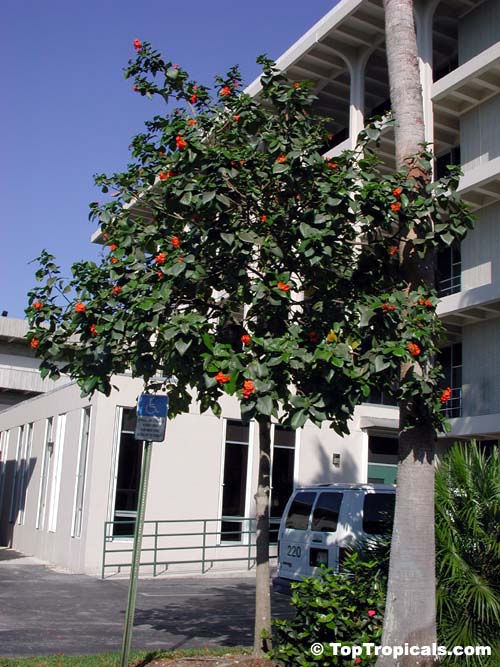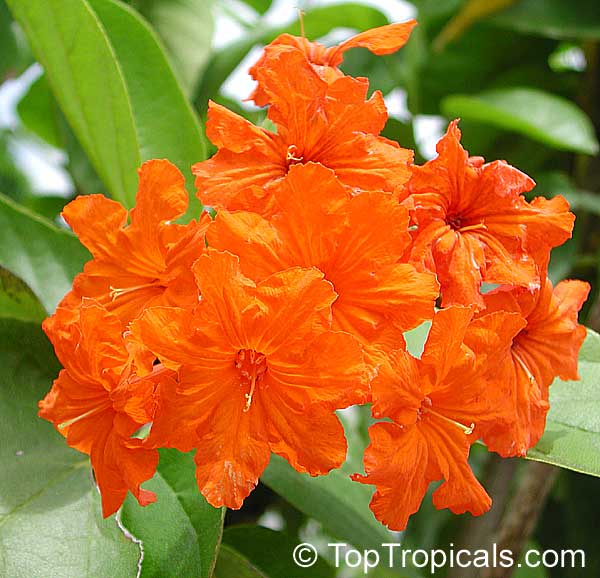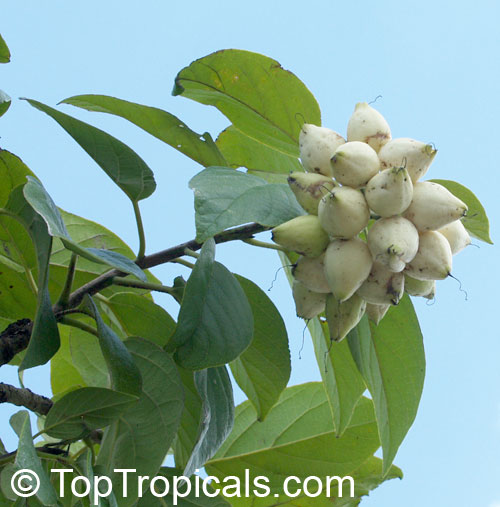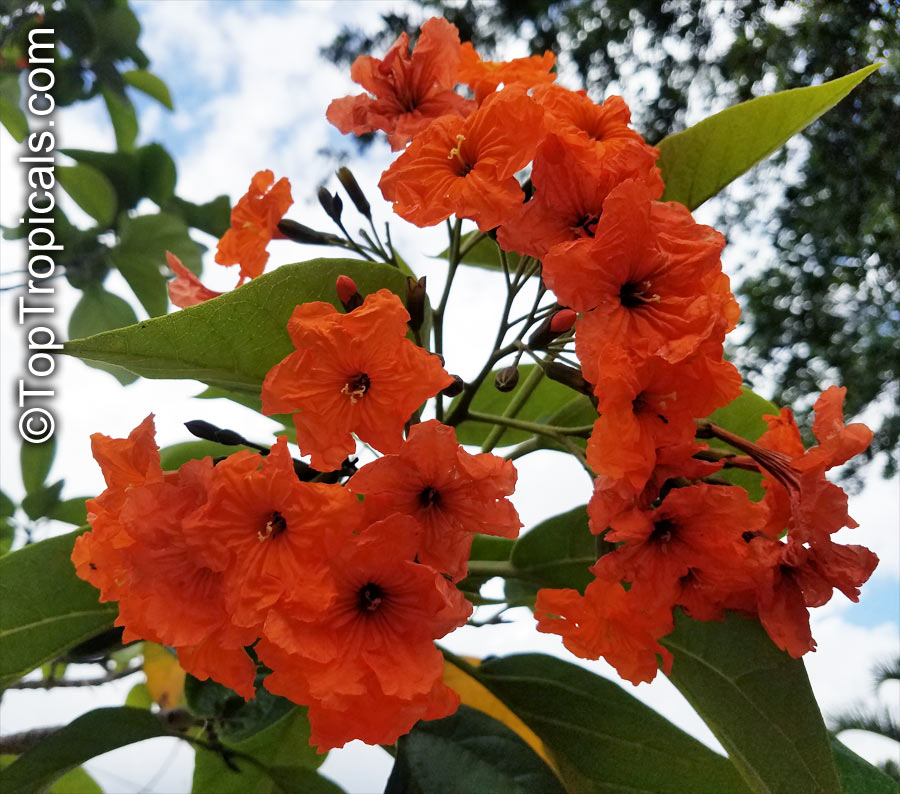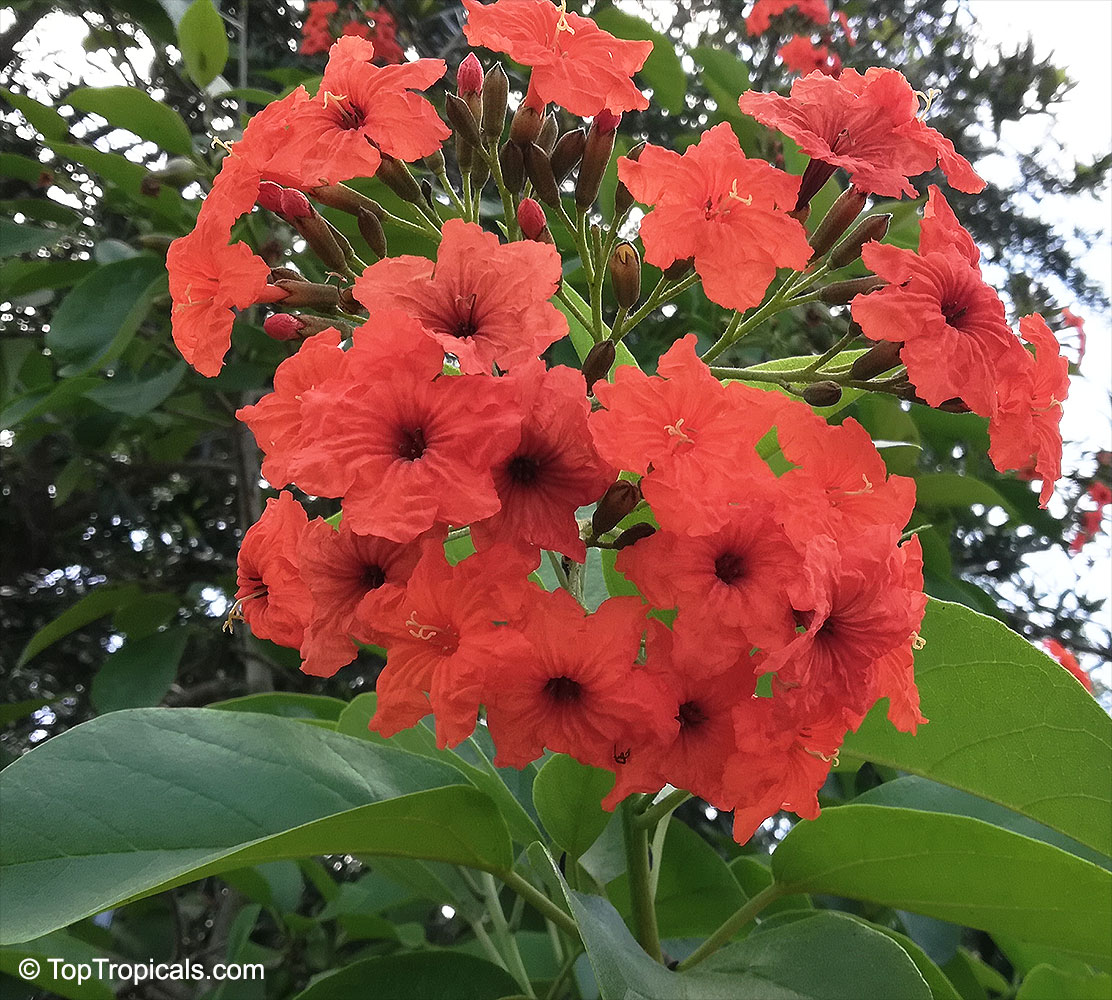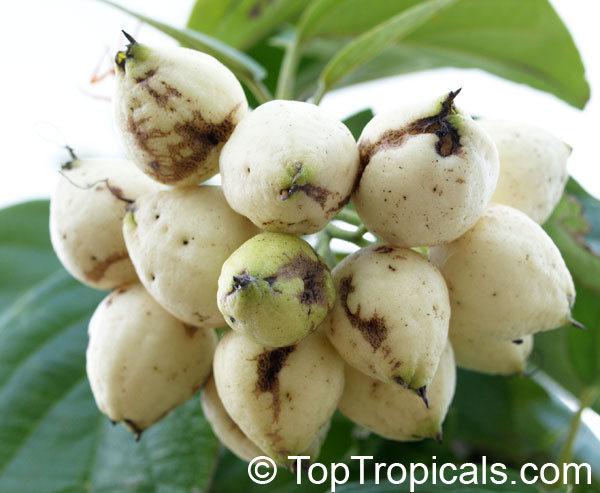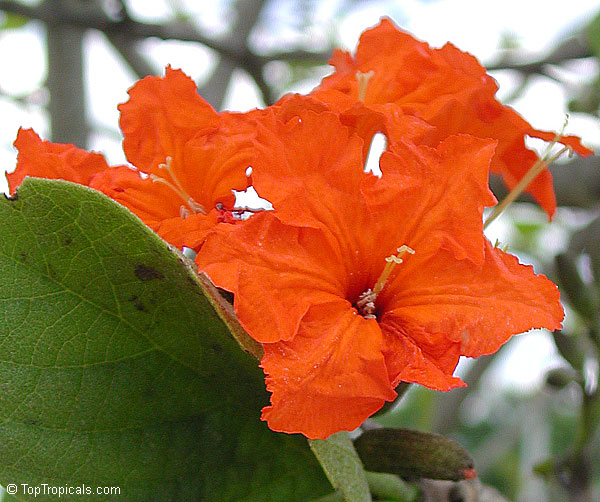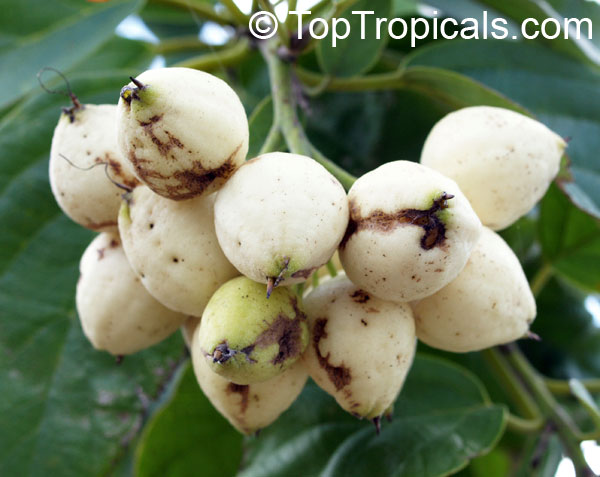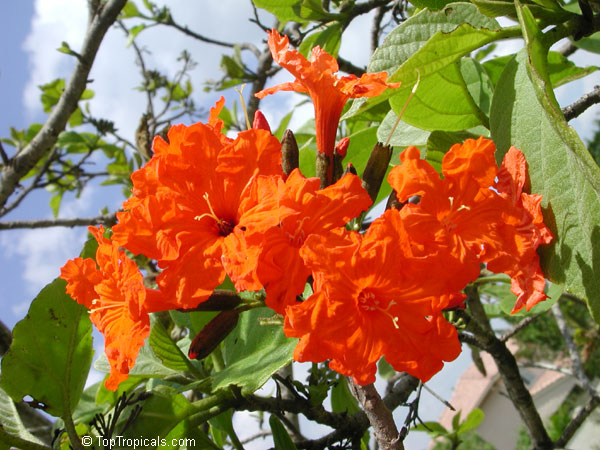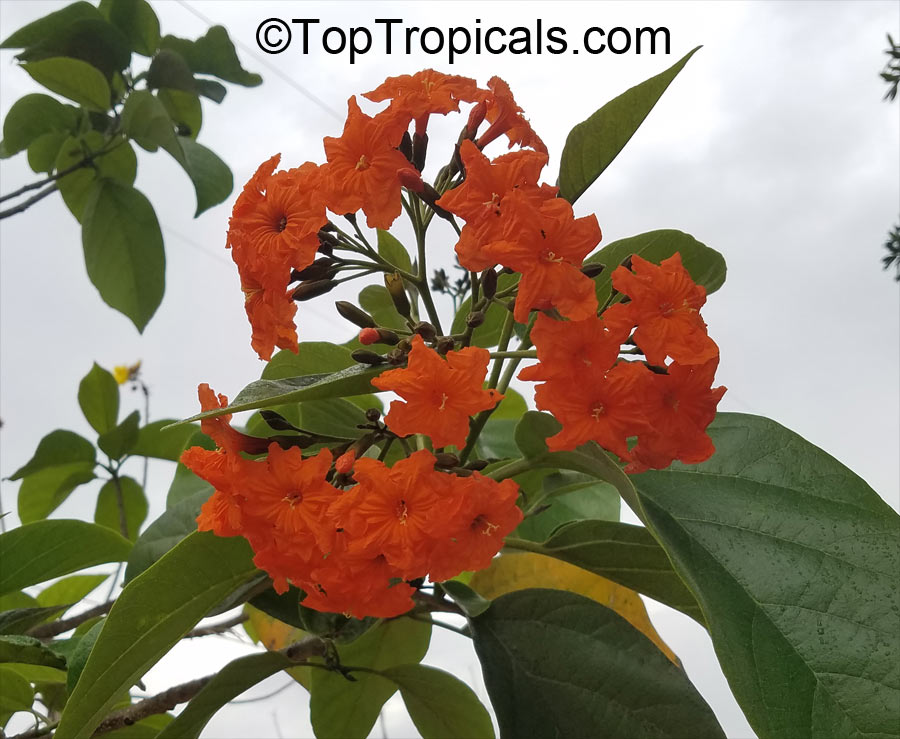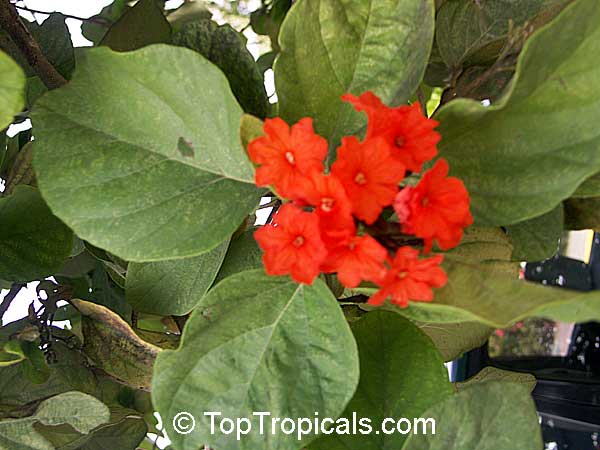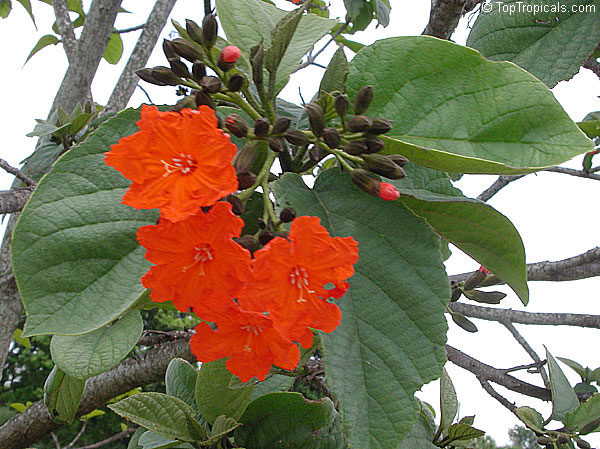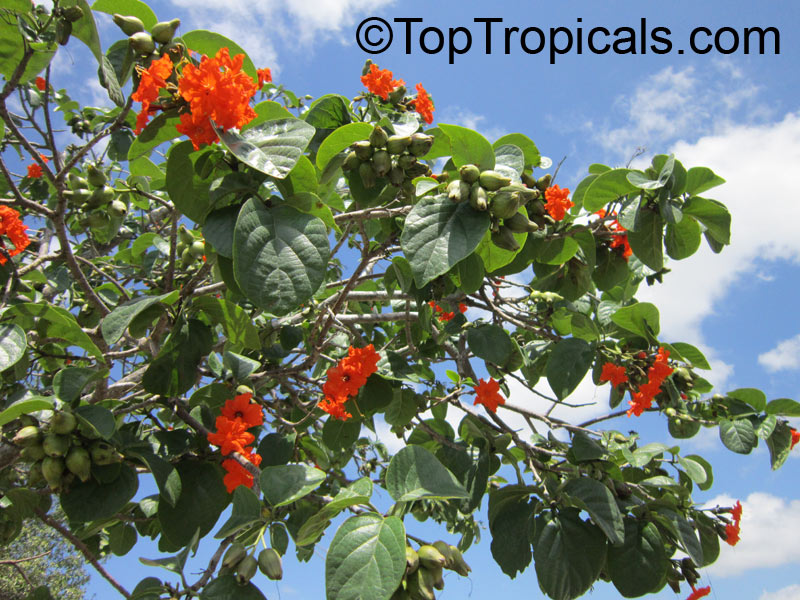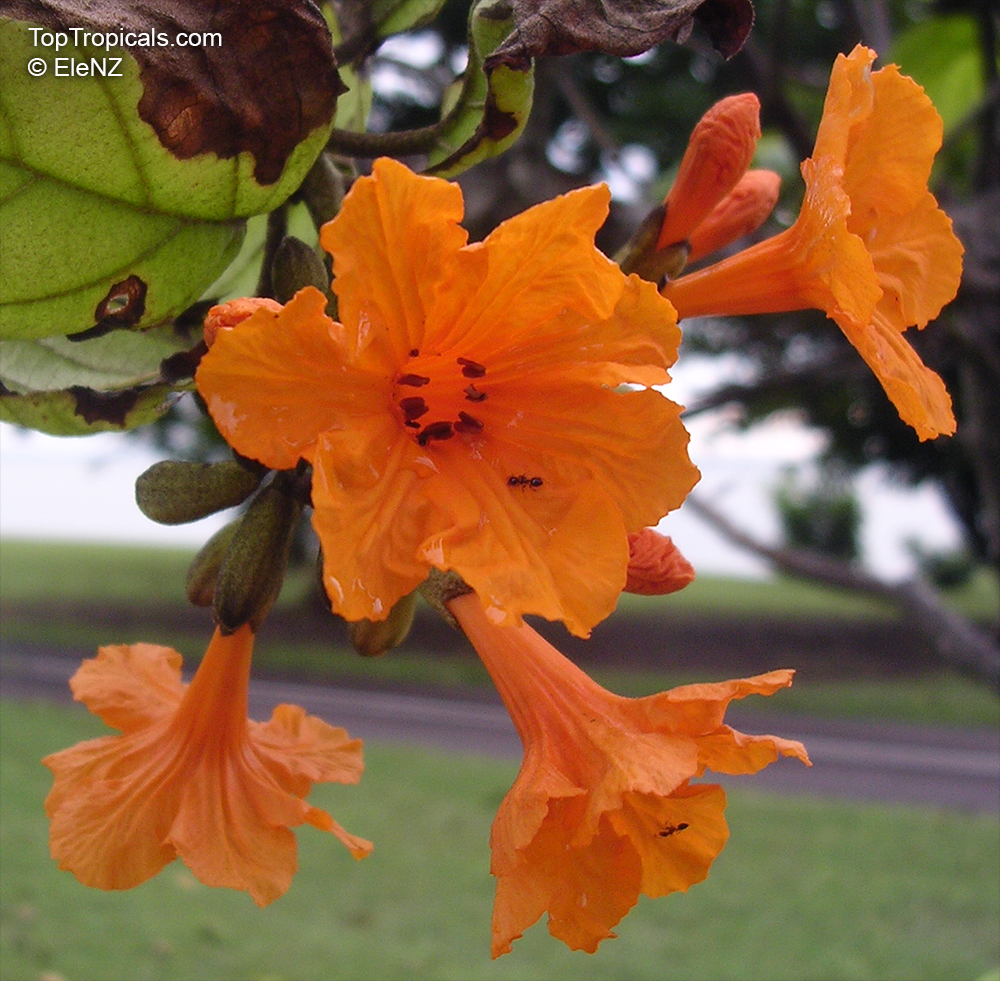Cordia - Search results
Top Tropicals Plant Encyclopedia
| Number of plants found: 13 | Next | 
|
Go to page: | 1 | 2 |
Botanical name: Cordia boissieri
Common names: Texas Olive, Anacahuita
Family: Boraginaceae
Origin: Texas Rio Grande area, northern Mexico










Very popular small trees adorned through much of the spring and summer with large clusters of showy white flowers. It is indigenous to the chaparral areas of extreme southern Texas and well into Mexico. Preference for sandy, gravely, well drained soils. Requires ample water to become established, after which it is generally considered quite water efficient. Periodic, deep soakings through the hottest period of summer will aid in leaf retention and improved color. These plants don't like to be grown in pots, in spite of their small size, and usually don't look very happy in containers; however once planted in the ground,they grow faster and start thriving. Cold tolerant plant, takes some freeze.
Botanical name: Cordia caffra
Common names: Septee, Saucer-berry
Family: Boraginaceae
Origin: South Africa









The thin leaves are alternate, with a slightly toothed margin, shiny dark green above and paler green below. The scented, cream-white, bell-shaped flowers are borne in clusters at the end of the branches in spring/early summer. The fleshy fruits are deep orange drupes and look attractively appetizing to both humans and birds when ripe. They are edible, but not very tasty. The large calyx forms a saucer around the base of the fruit and may account for the common name.
The tree occurs naturally in coastal and riverine forests and bush. Although this tree thrives in semishade, it can also be planted in full sun where it grows almost equally well.
Although it is found growing in warm climates, this tree can tolerate mild frost. It is advisable to protect the stem of a newly planted tree against frost for the first few winters, or until the stem at ground level reaches at least 80mm in diameter.
Parts of this tree are used medicinally to treat sore eyes, fever and wounds.
Botanical name: Cordia dentata
Common name: Cordia Suwana-Pruek
Family: Boraginaceae
Origin: Mexico










Small tree or shrub with clusters of crincly, papery, pale yellow flowers and sand-paper-like leaves.
Botanical name: Cordia goeldiana
Common names: Freijo, Jenny Wood
Family: Boraginaceae
Origin: Brazil





Freijo is very similar in strength properties to Teak, and is occasionally used as a substitute for Teak in building ships.
Botanical name: Cordia lutea
Common names: Yellow Geiger, Muyuyo
Family: Boraginaceae
Origin: Ecuador, Marquesas, Galapagos, Peru







Ever-blooming small tree with elliptic leaves with rough upper surface. Flowers are bright canary-yellow in clusters. Free-branching habit. The plant requires regular watering until established. Nice specimen container plant.
Botanical name: Cordia myxa
Common names: Assyrian Plum, Lasura
Family: Boraginaceae
Origin: Tropical Asia






Cordia myxa (Assyrian Plum) is a small deciduous tree native to tropical Asia and grows to about 10-20 ft in height. It thrives in full sun and requires moderate water. This plant produces magnificent white or off-white flowers from May to October, and around June, it produces surprisingly edible and sweet plums. This ethnomedical plant is appreciated for its many health benefits, from its ripe fruit full of vitamins to the Lasura bark and roots which can be used as a local remedy against cough, cold and other ailments.
When grown in a container, Cordia myxa will thrive in USDA Hardiness Zones 9-11. To ensure its optimal growth, the soil should be kept moist but not soggy. If you live in a region with colder winter temperatures, make sure to shelter the plant indoors, such as in a warm porch. When on the move indoors, bringing the plant into warmer temperature slowly is necessary to prevent shock. When taking outdoors in the warmer weather, the transition must also be consistent to ensure optimal growth. Additionally, the plant will appreciate a bit of fertilizer a couple of times during the growing season.
Botanical name: Cordia parvifolia
Common name: Little Leaf Cordia
Family: Boraginaceae
Origin: Mexico








Evergreen, drought deciduous shrub with olive-gray leaves and bark. Drought-tolerant; suitable for xeriscaping. Great informal hedge or barrier in low water areas. Blooms in Spring and after Summer rains.
Botanical names: Cordia rupicola, Varronia rupicola
Common names: Puerto Rico Manjack, Cliff Manjack
Family: Boraginaceae
Origin: Caribbean










For a number of years This species was considered extinct, until one small population was found on Puerto Rico and another was subsequently found on the island of Anegada in the Virgin Islands. The small white flowers produce a one seeded red fruit. Tolerates alkaline soils.
Do you want something rare and resilient to spice up your plant collection?
This botanical survivor from Puerto Rico and the Virgin Islands was once thought extinct, but it made a comeback!
Adorned with charming small white flowers, it bursts forth into vibrant red, one-seeded fruit that's as delightful as it is unique.
Perfect for Southern gardens, this little powerhouse thrives in alkaline soils and doesn't shy away from tough conditions - talk about low maintenance!
The fruit, though small and not widely known, is edible and can be eaten fresh.
Cordia rupicola tree have been used in folk medicine. It's believed to have anti-inflammatory properties.
With a fascinating history and its eye-catching appeal, adding the Puerto Rico Manjack to your garden is like owning a piece of living history.
Botanical names: Cordia salvifolia, Cordia nesophila
Common names: Islandloving Cordia, Black Sage
Family: Boraginaceae
Origin: Dominican endemic





Botanical names: Cordia scabra, Cordia sebestena
Common names: Geiger Tree, Scarlet Cordia, Aloe Wood
Family: Boraginaceae
Origin: Florida Keys, the West Indies, and northern South America






Beautiful orange flowers will become a white edible fruit. According to the legend, the name Geiger Tree was bestowed by Audubon in memory of John Geiger a Key West 19th century pilot and wrecker. The very showy tubular orange flowers are up to 1 1/2 inches in diameter (4 cm). They appear scattered over the tree, most of warm season. The fruits are oval shaped, 1 to 1.5 inches long (2.5 to 4 cm) with a whitish color. They are borne in clusters. Although they are edible and have a pleasant fragrance, they have poor flavor.
| Next |  |
Use link to repeat this search:
https://toptropicals.com/cgi-bin/garden_catalog/cat.cgi?find=Cordia&search_op=and&keyword_op=and&language=e&number=10
&no_change_lang=1&user=tt&sale=1&first=0
